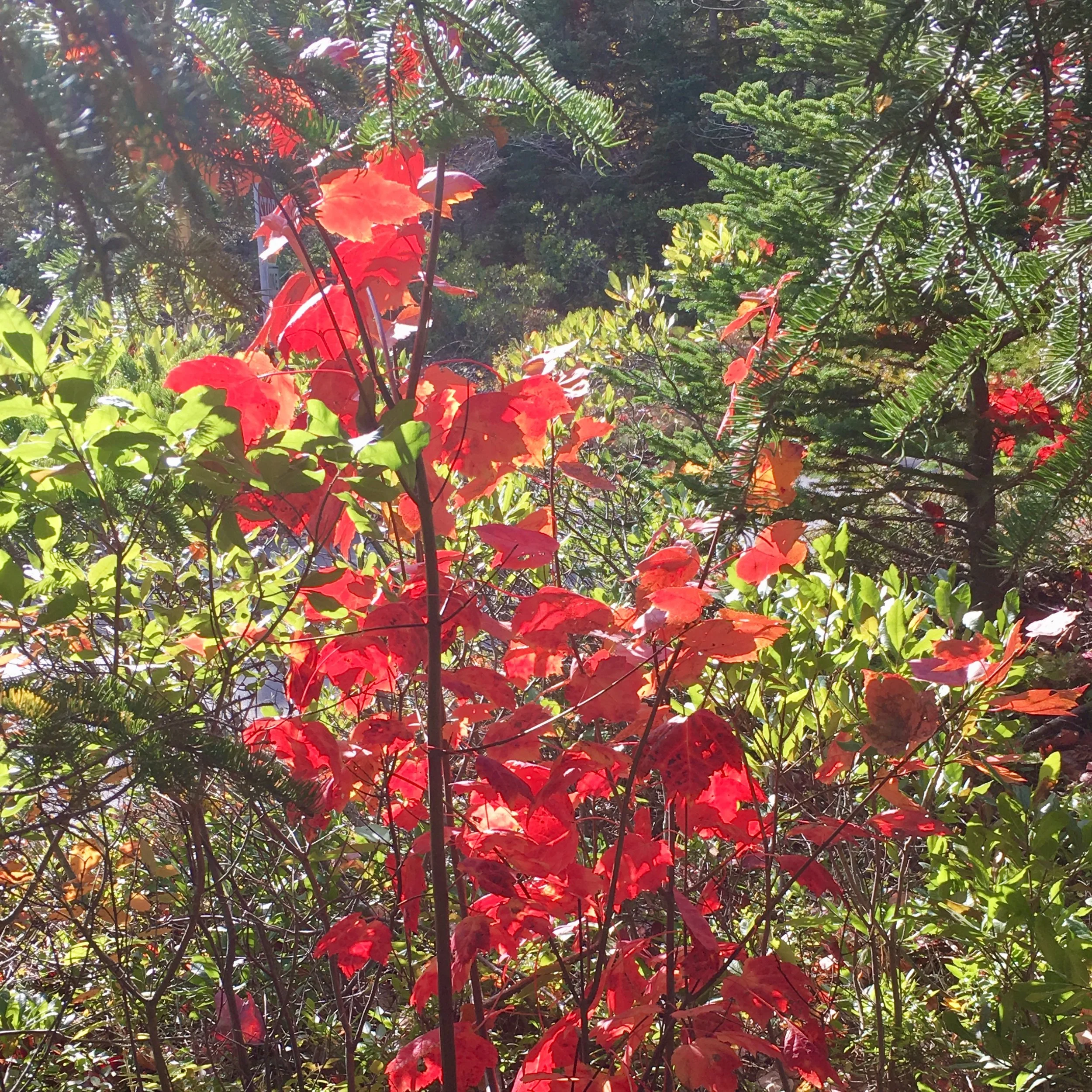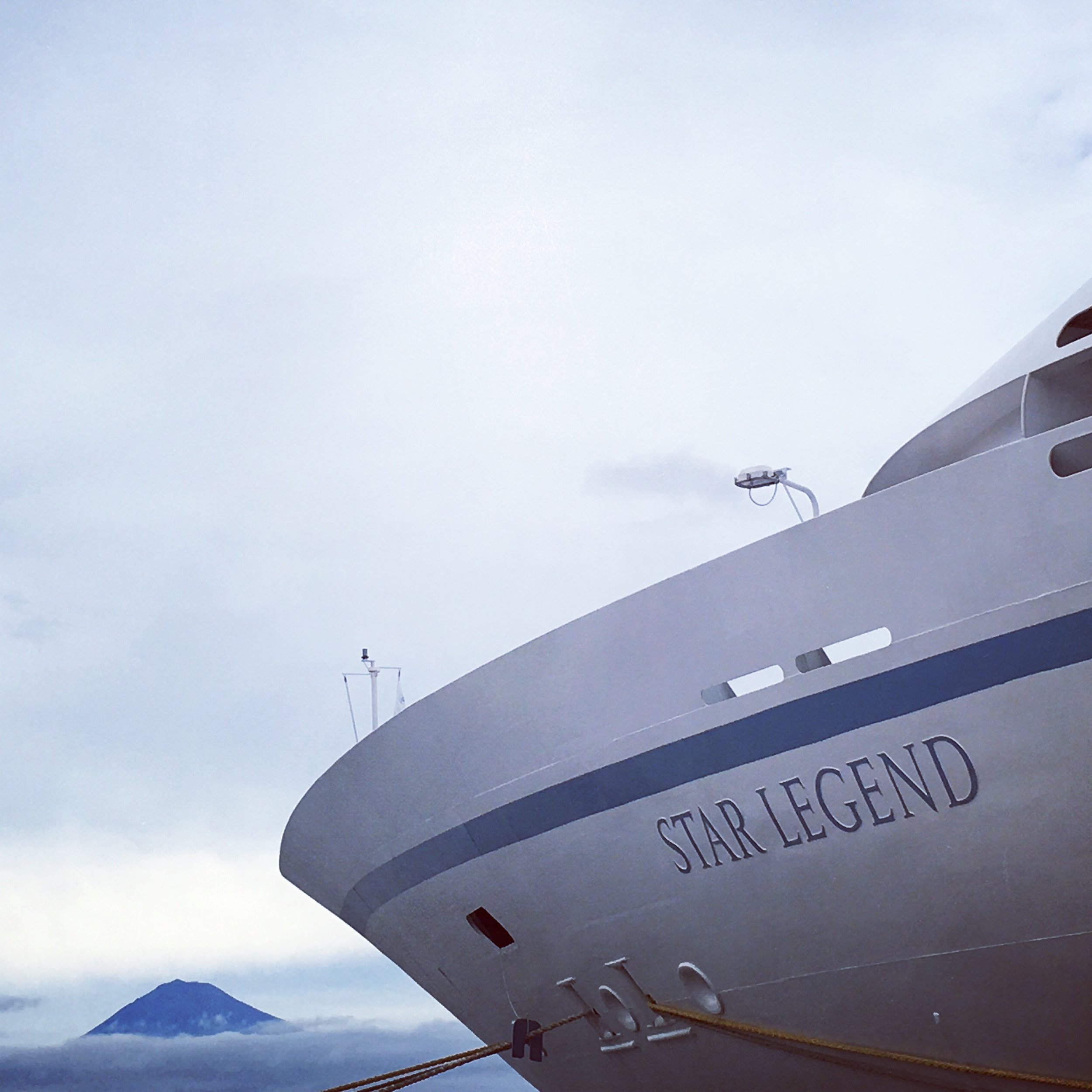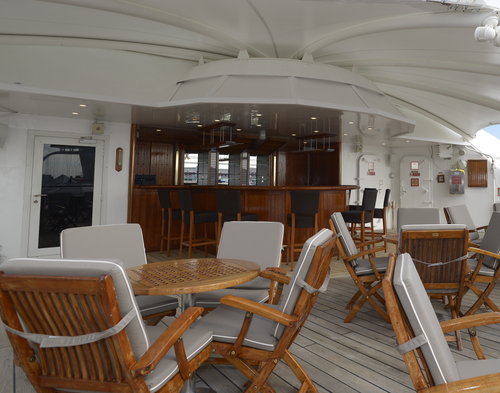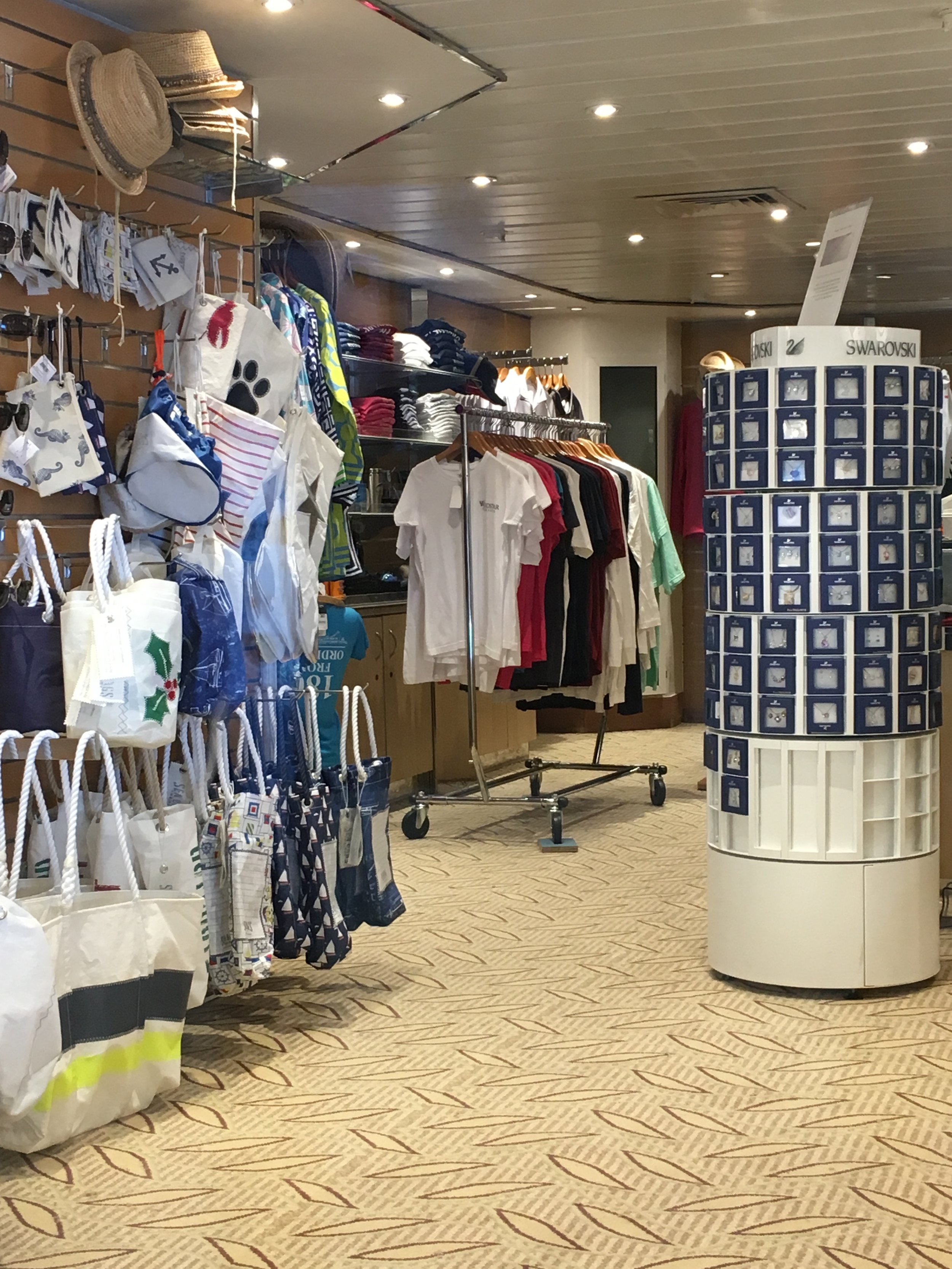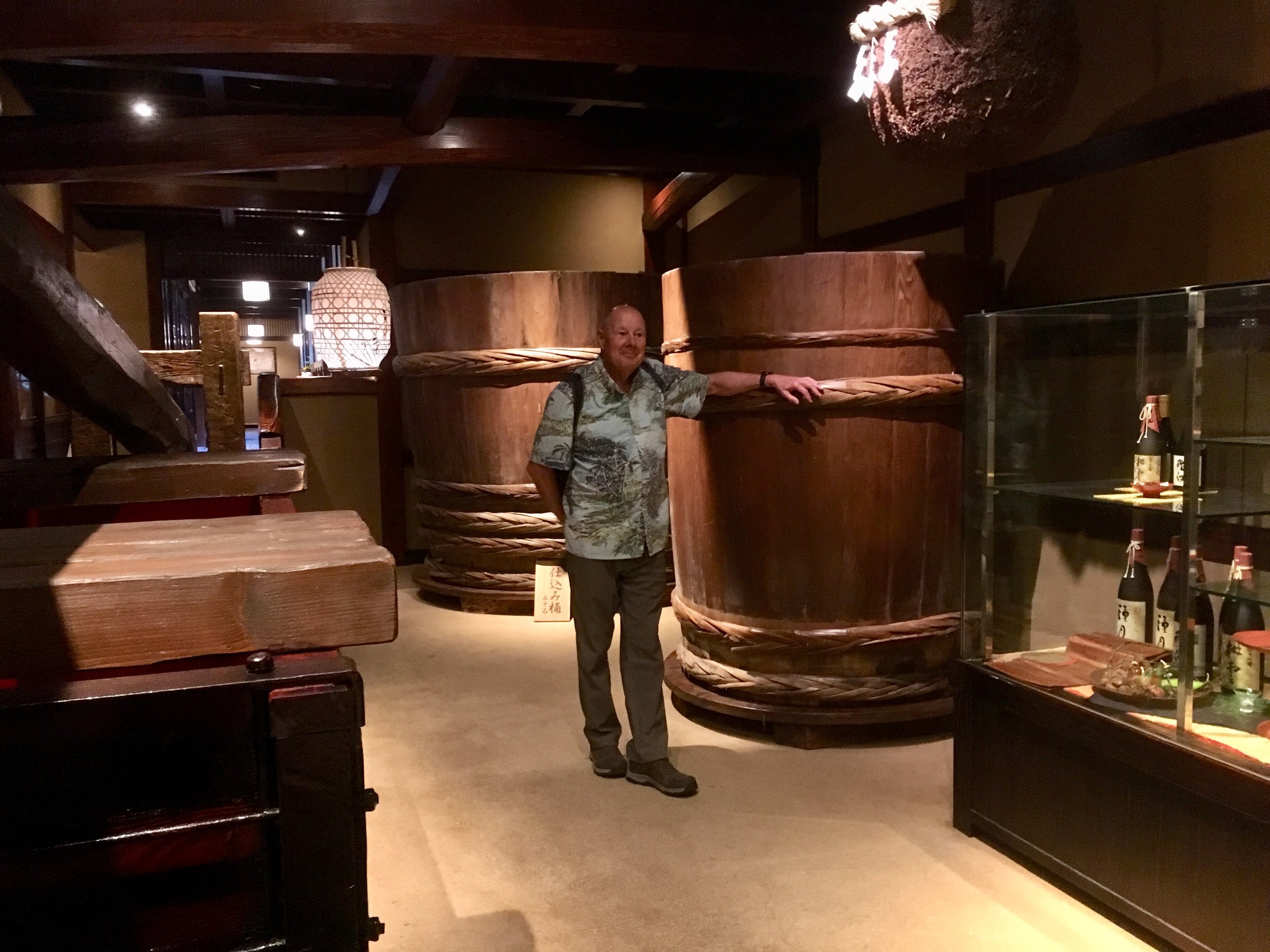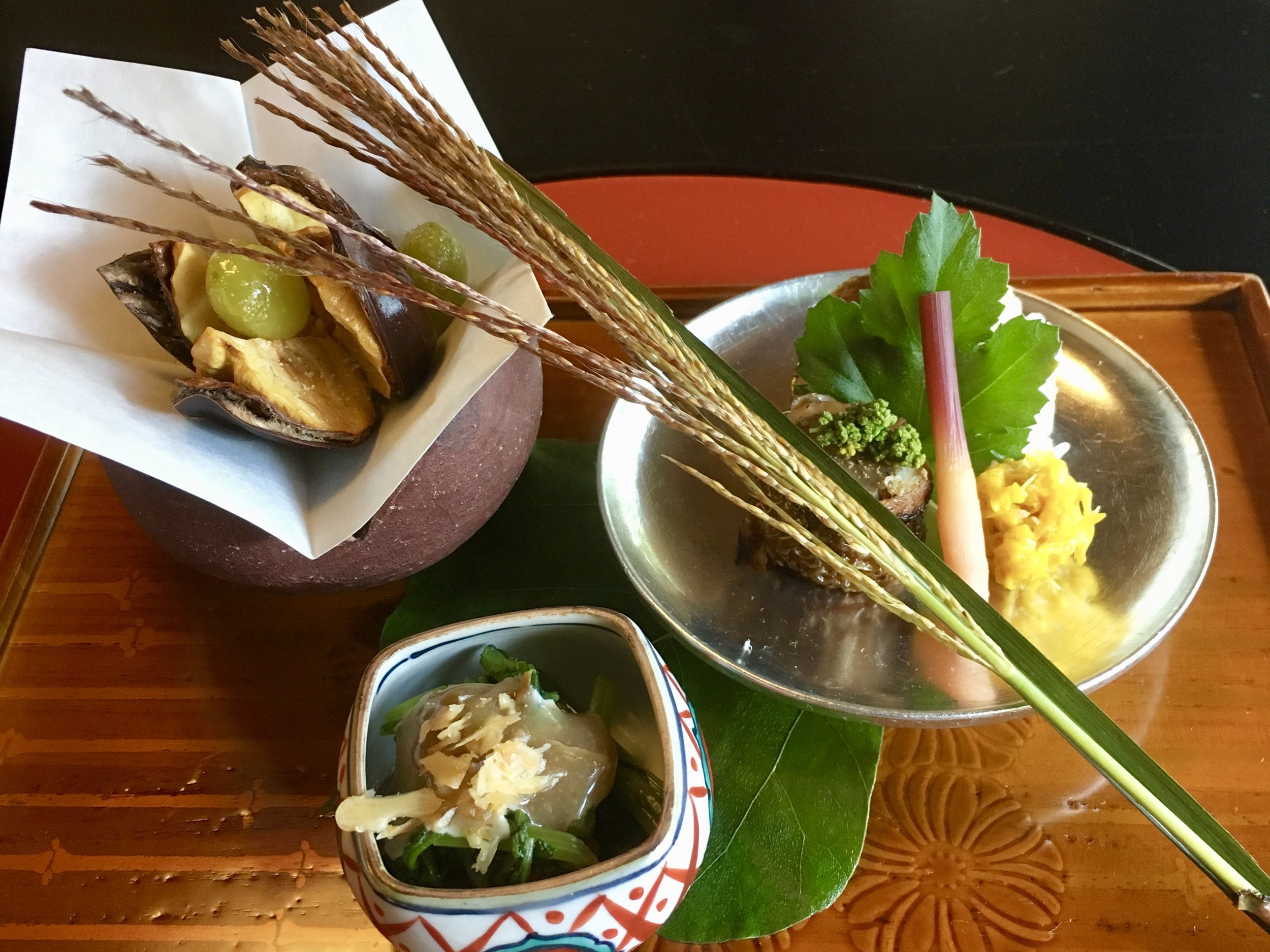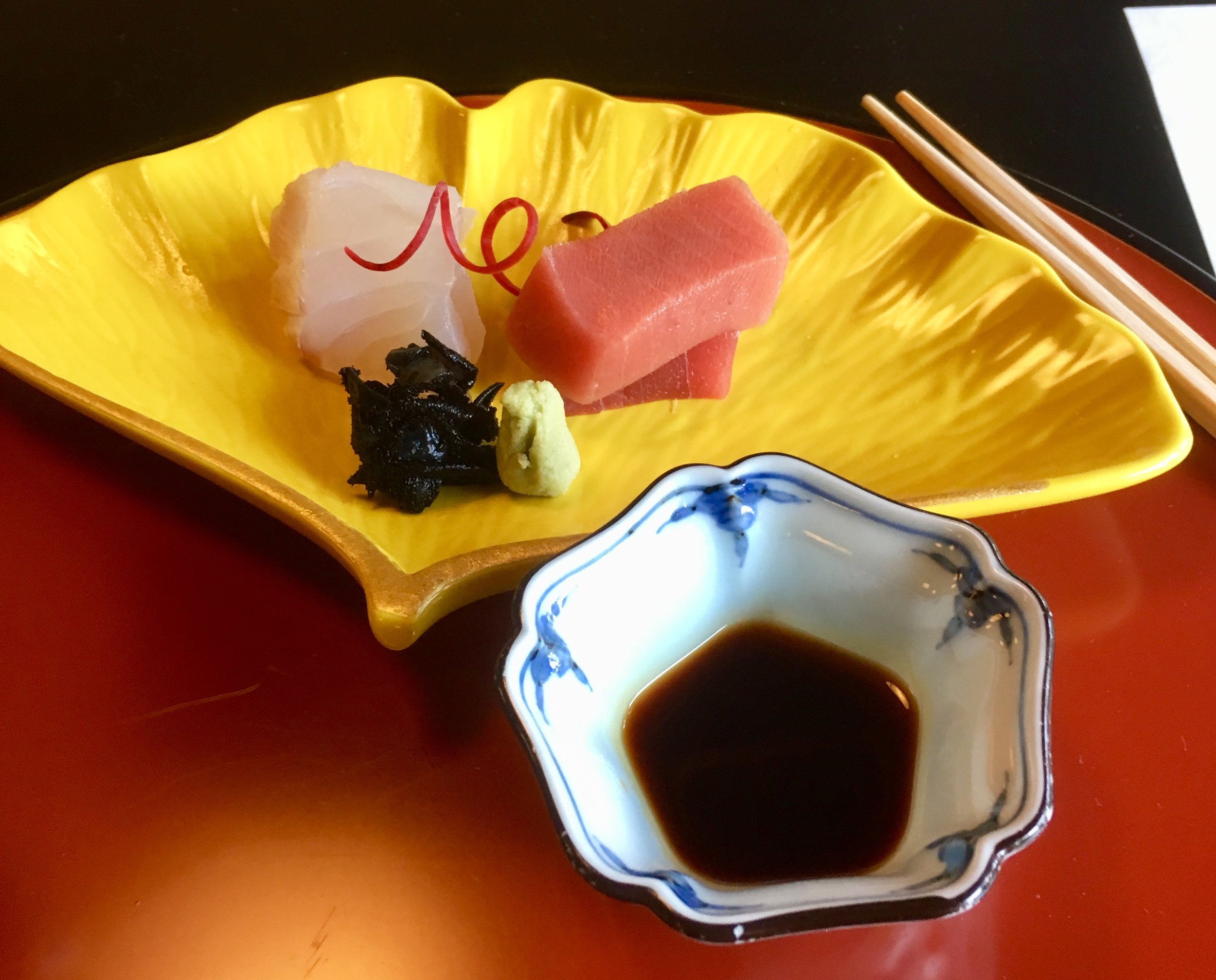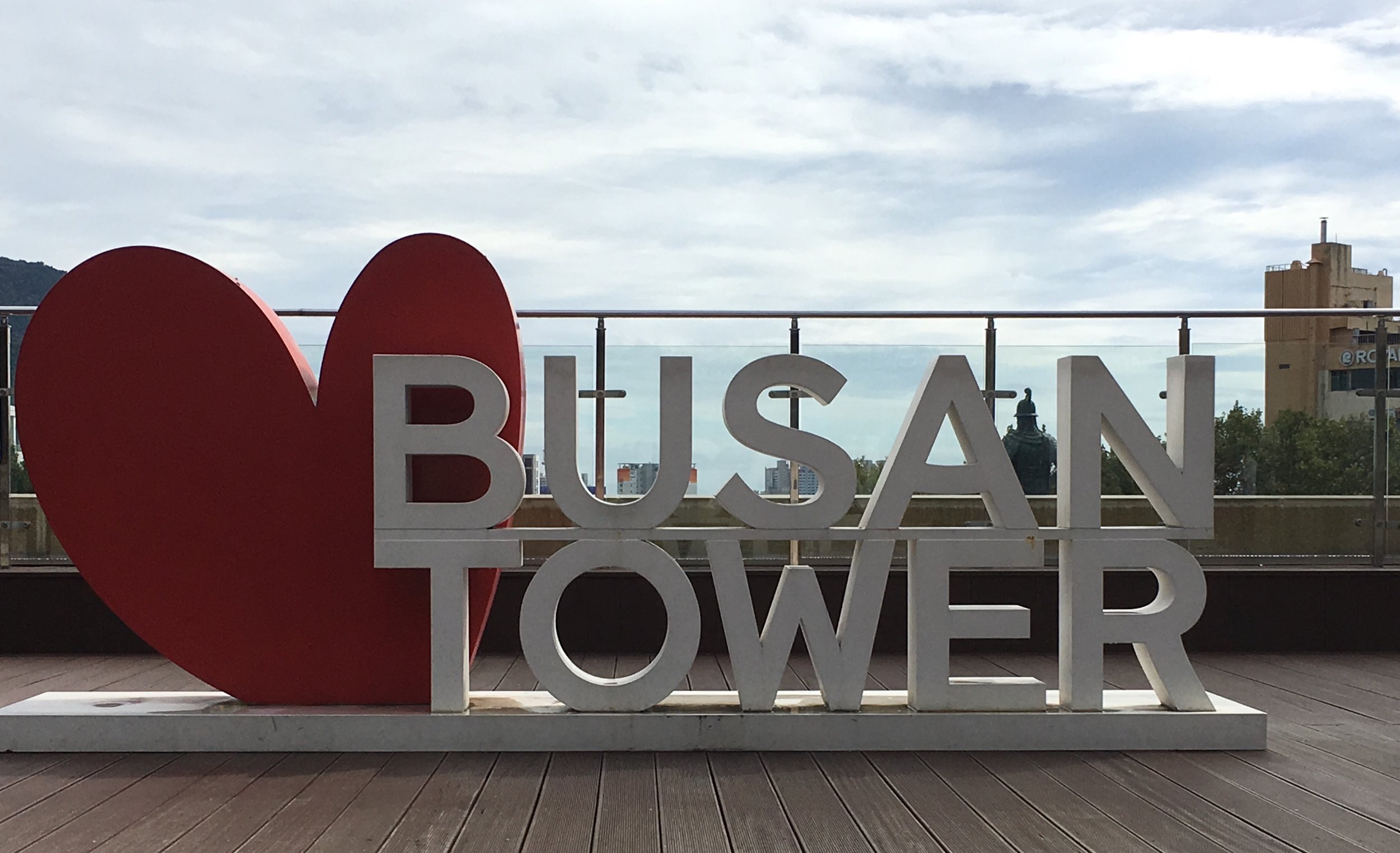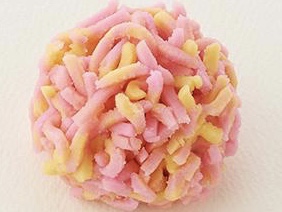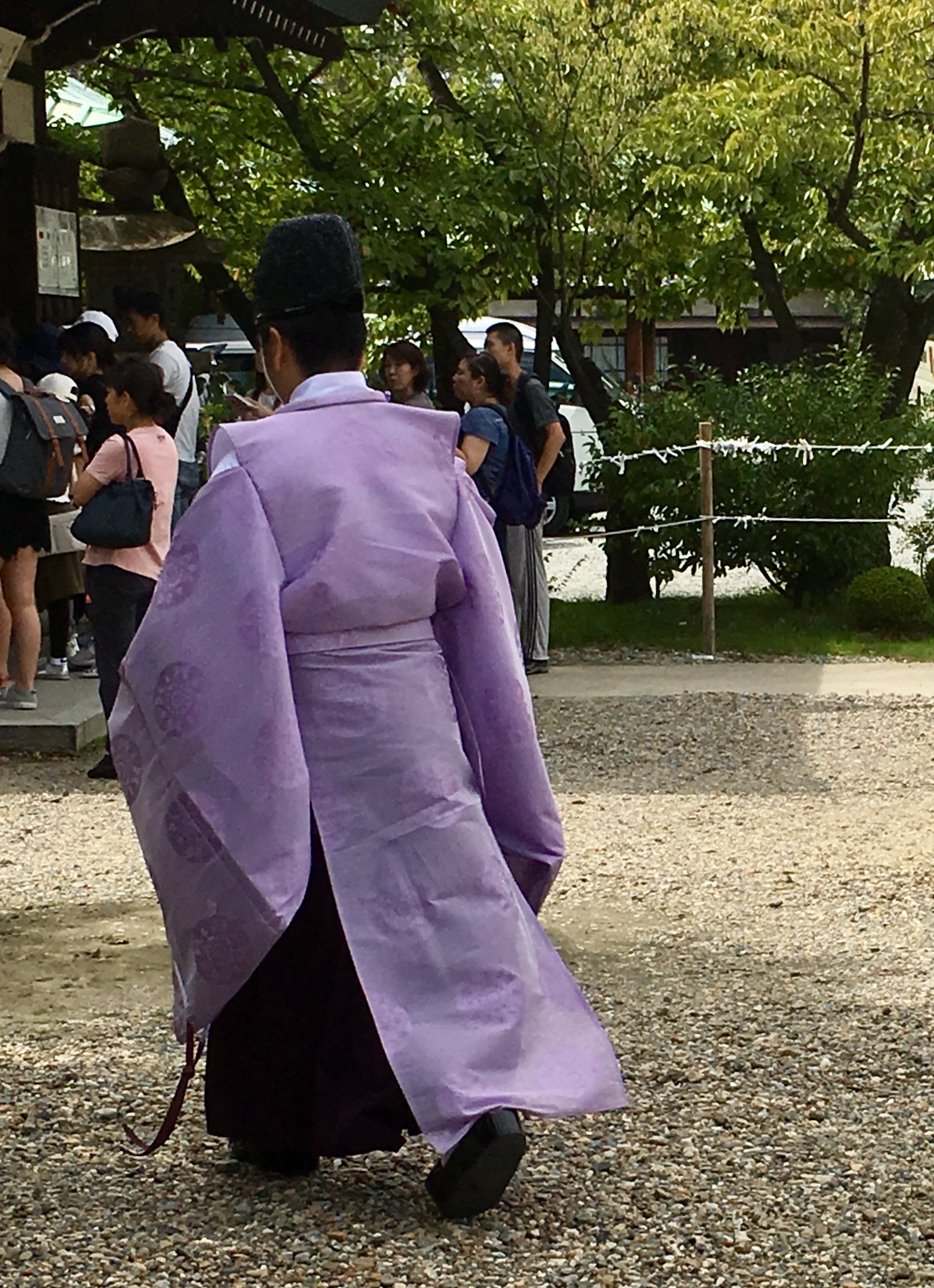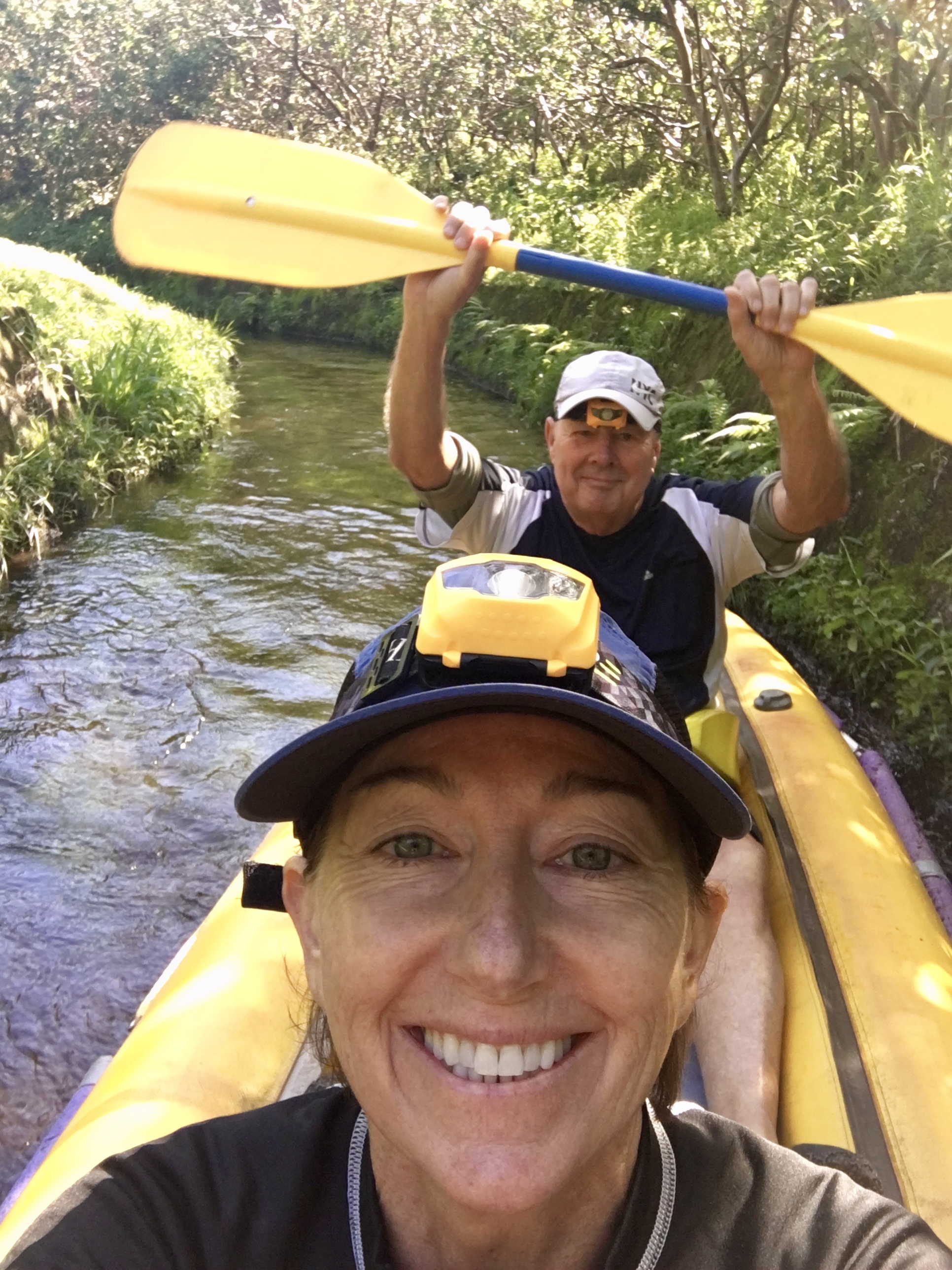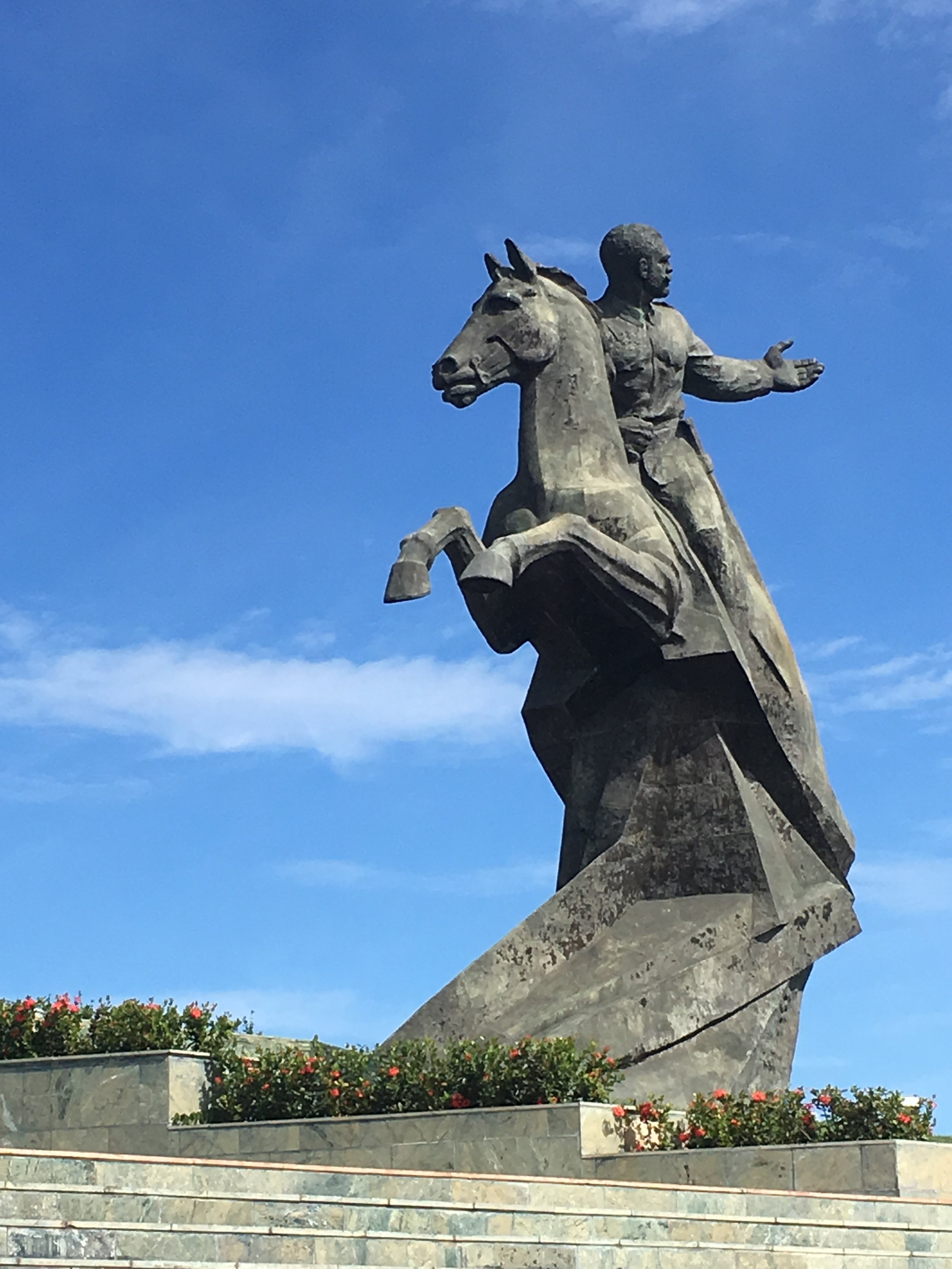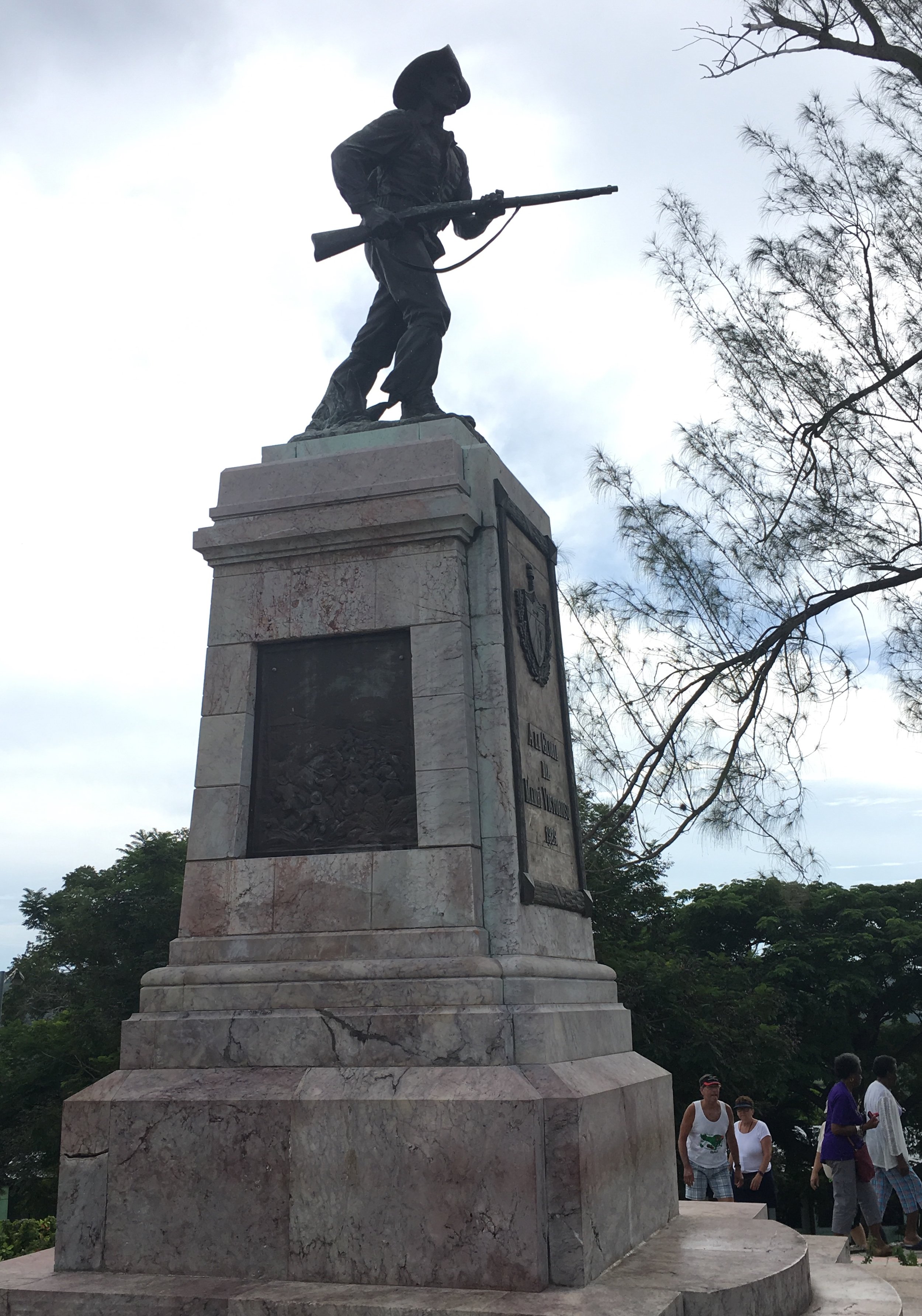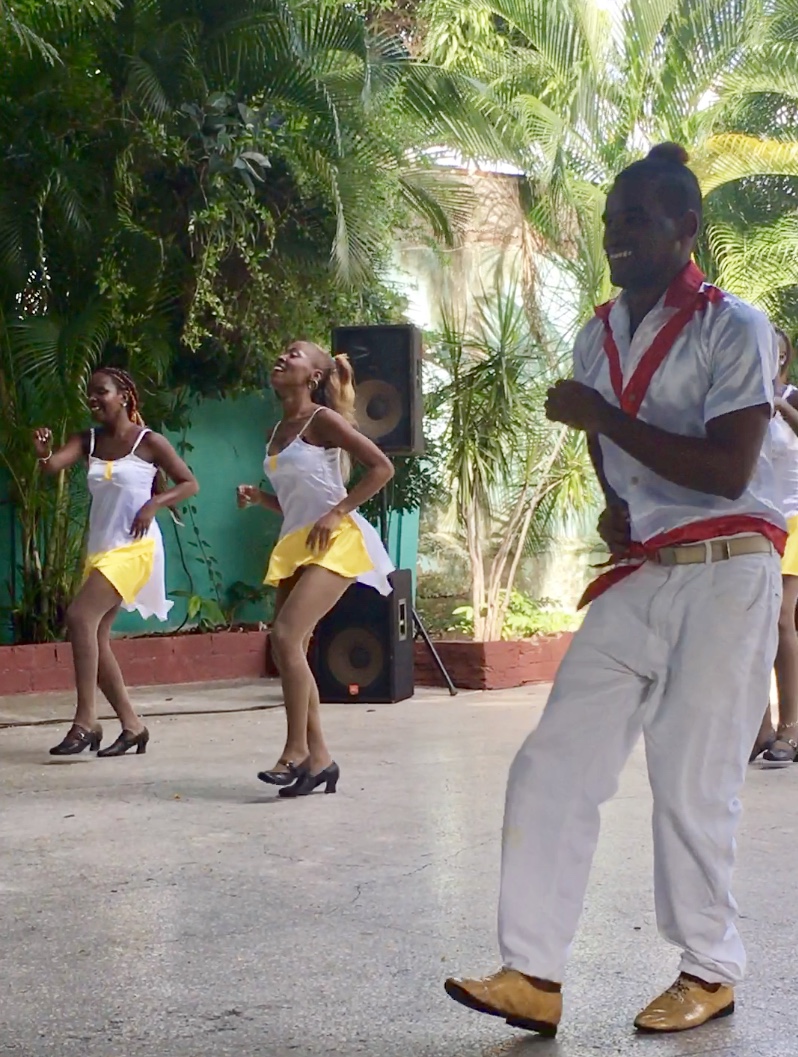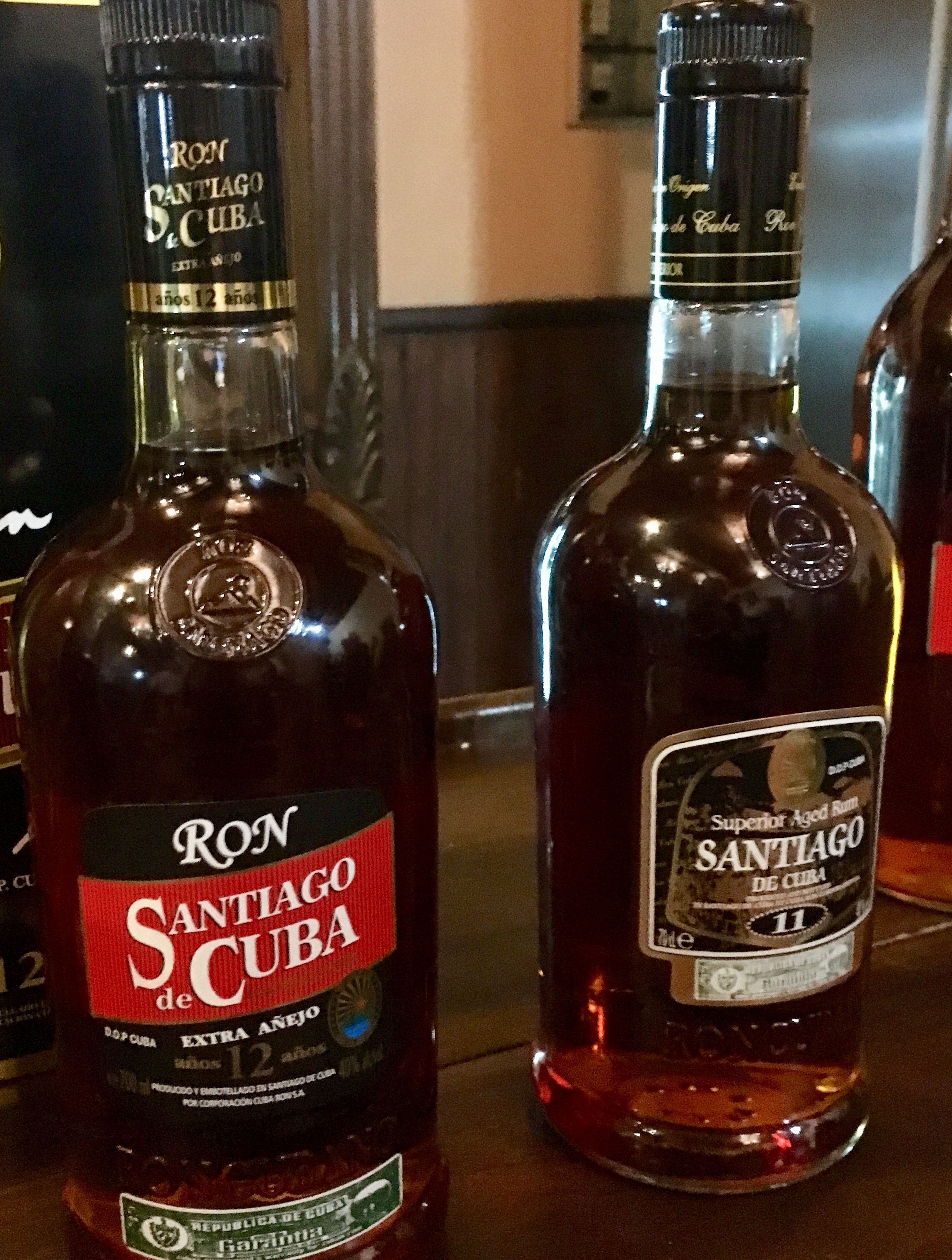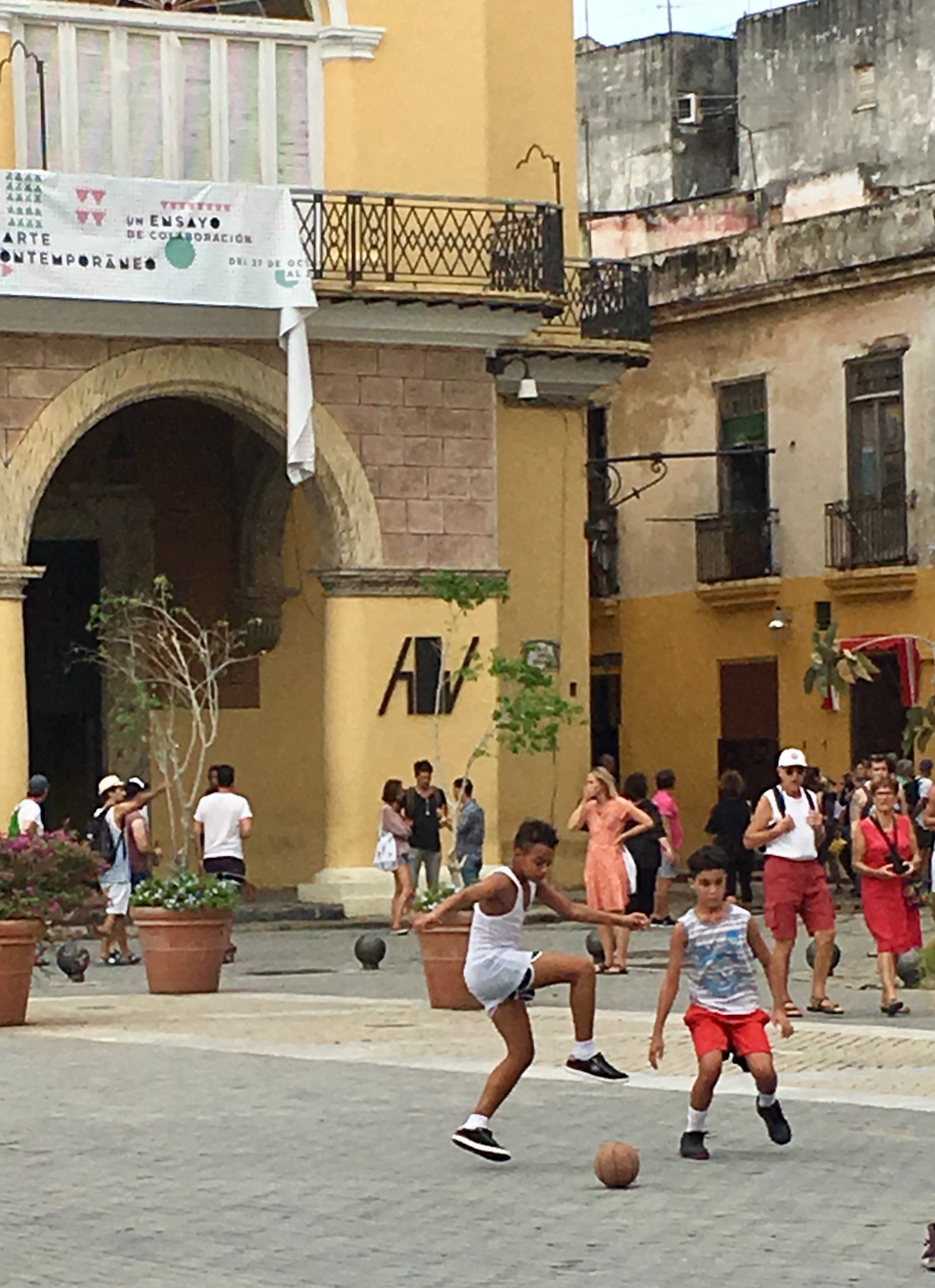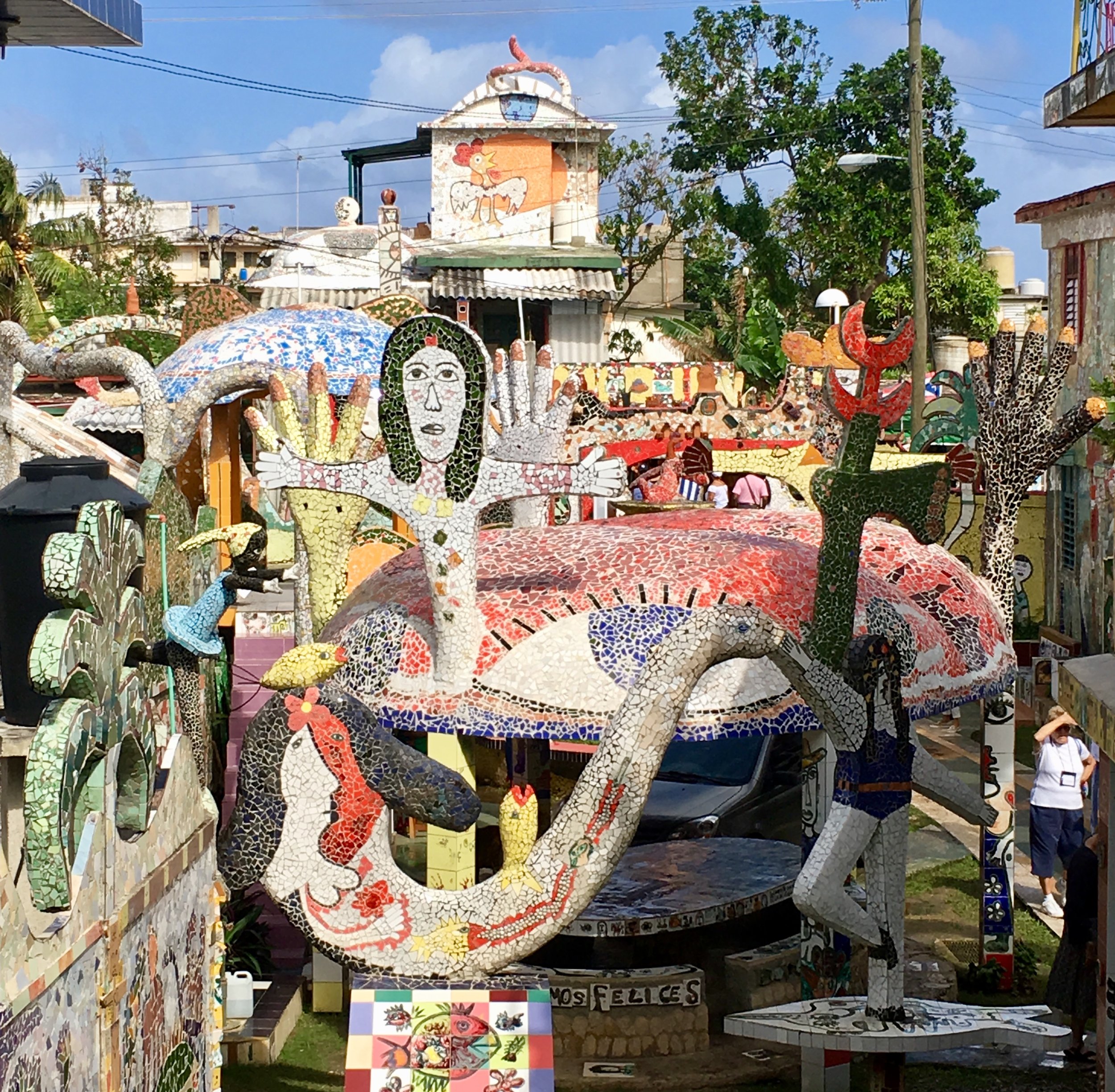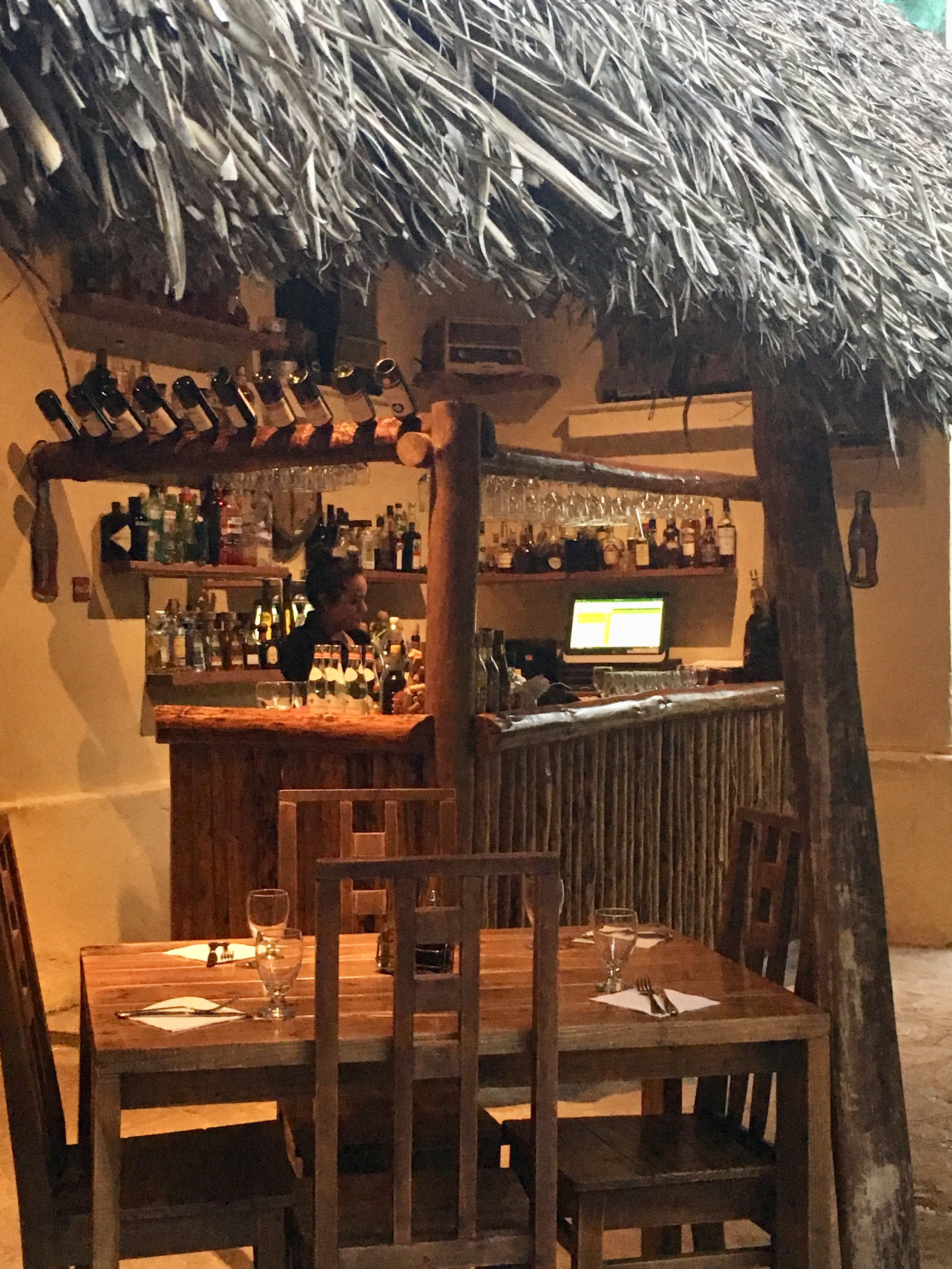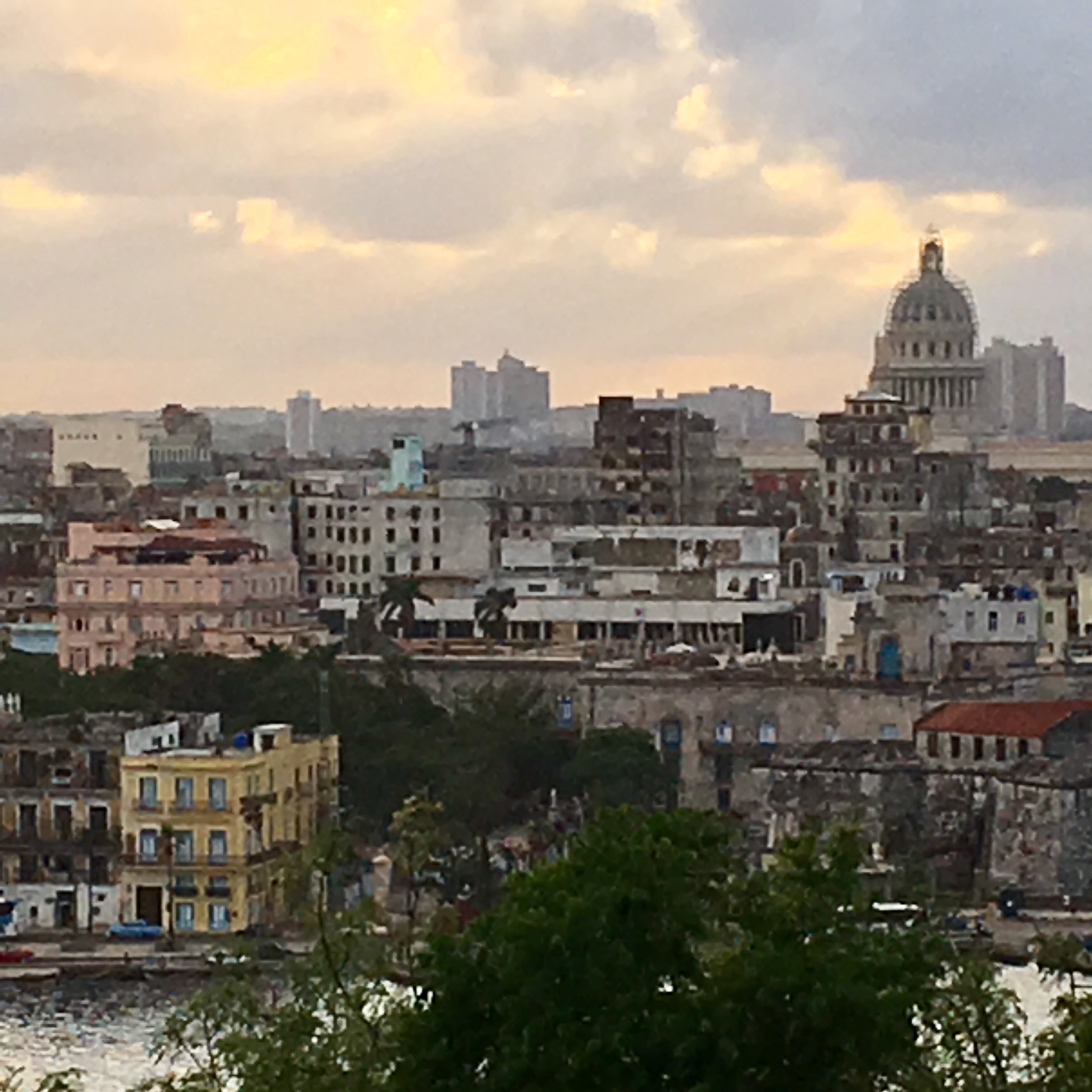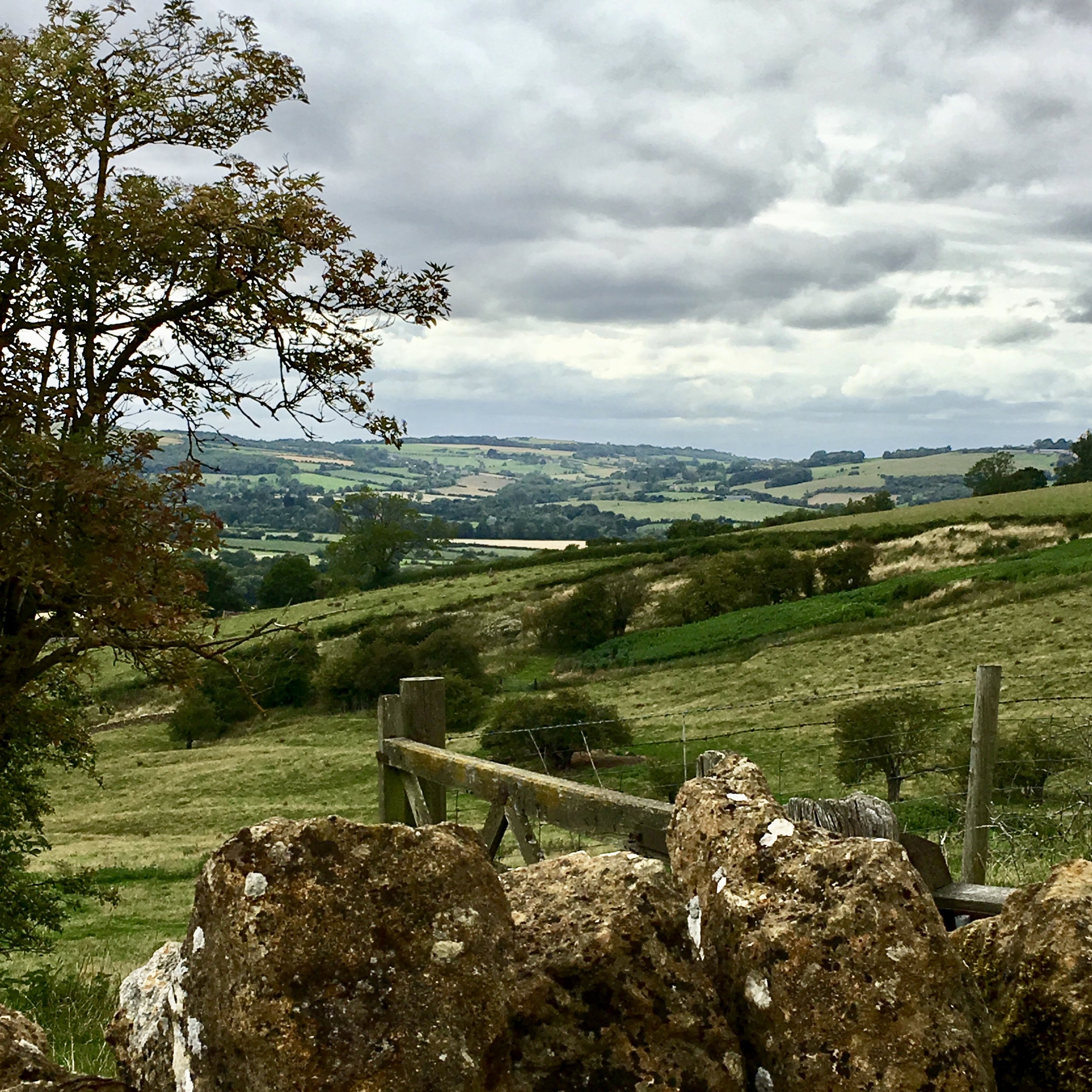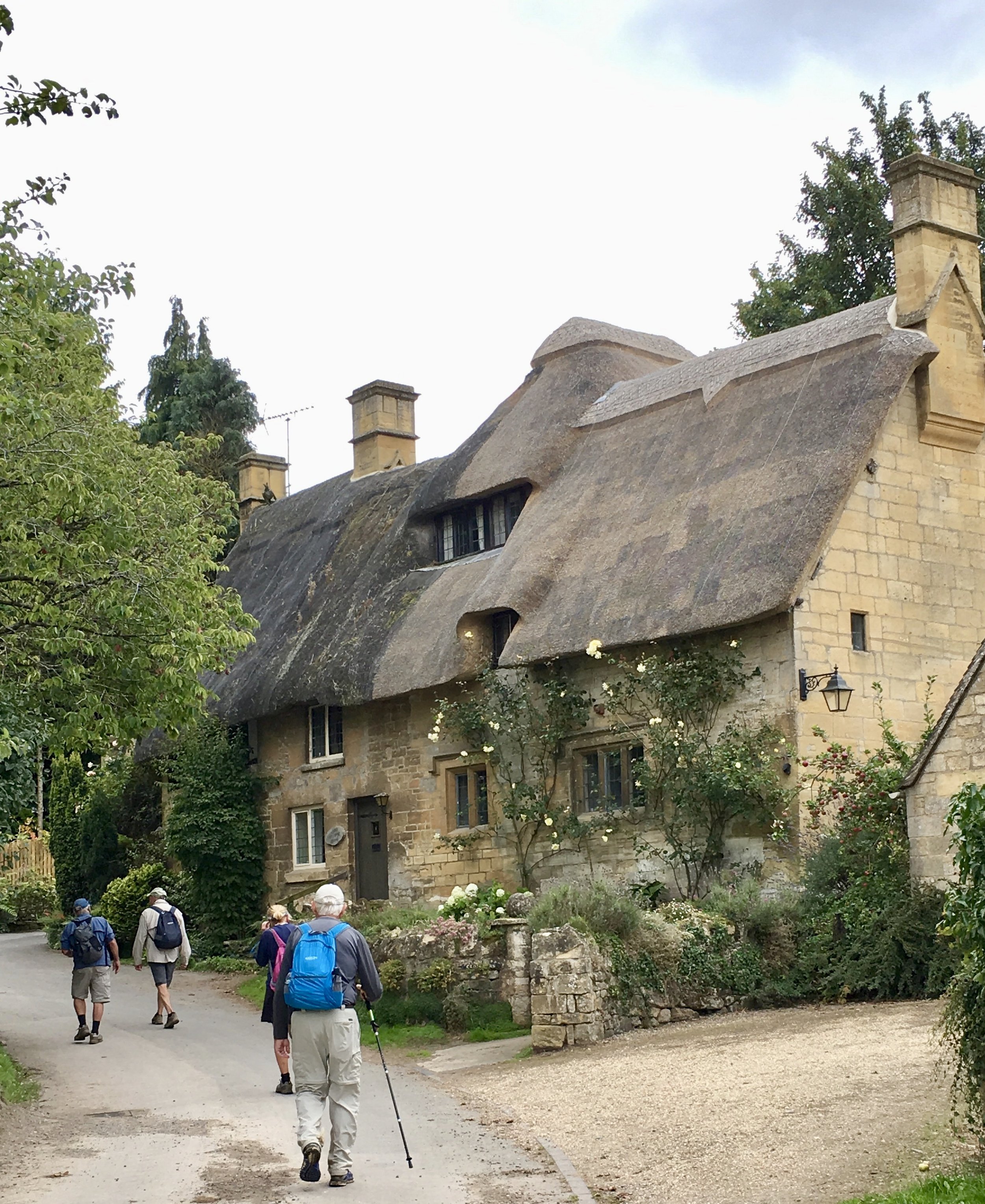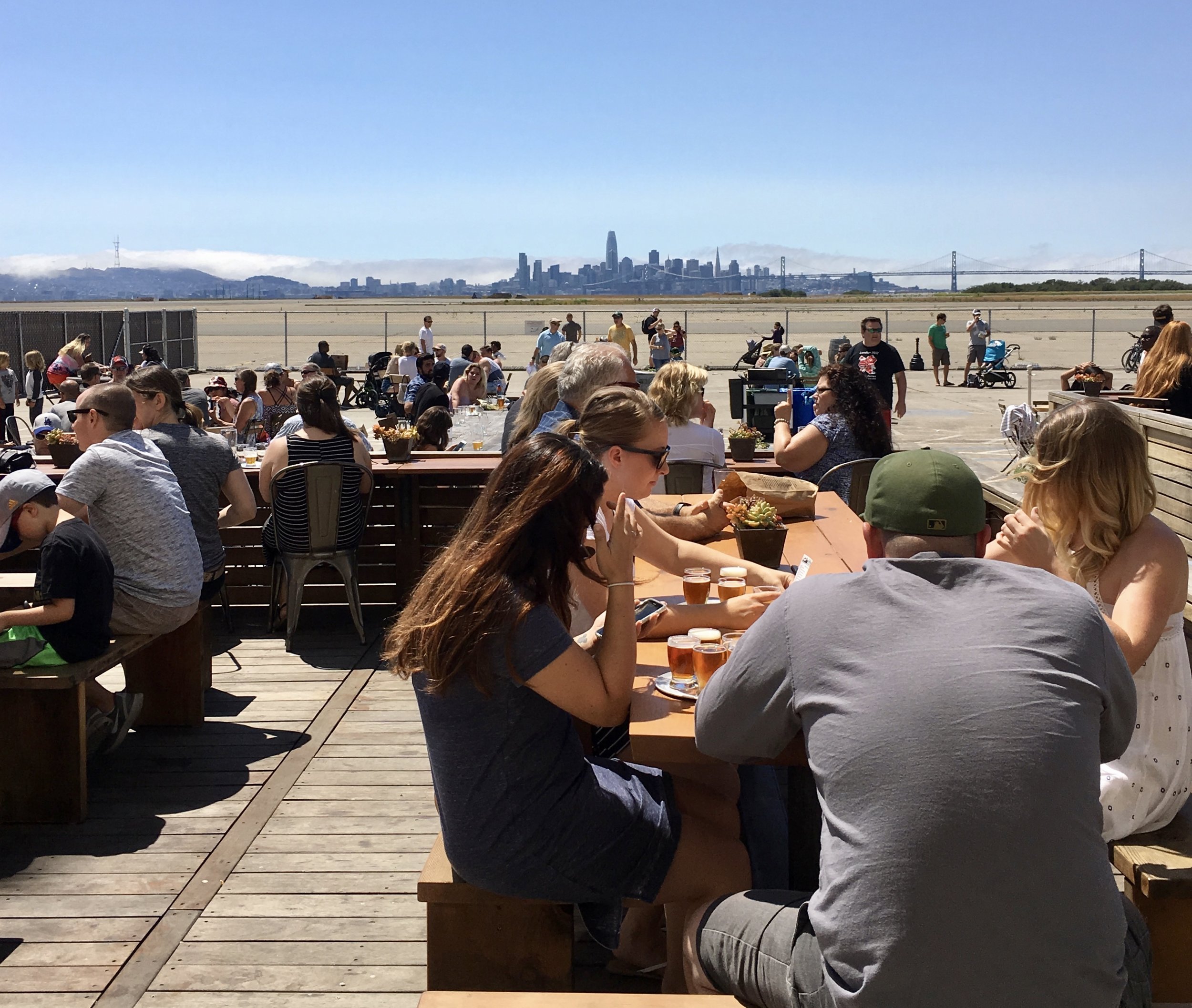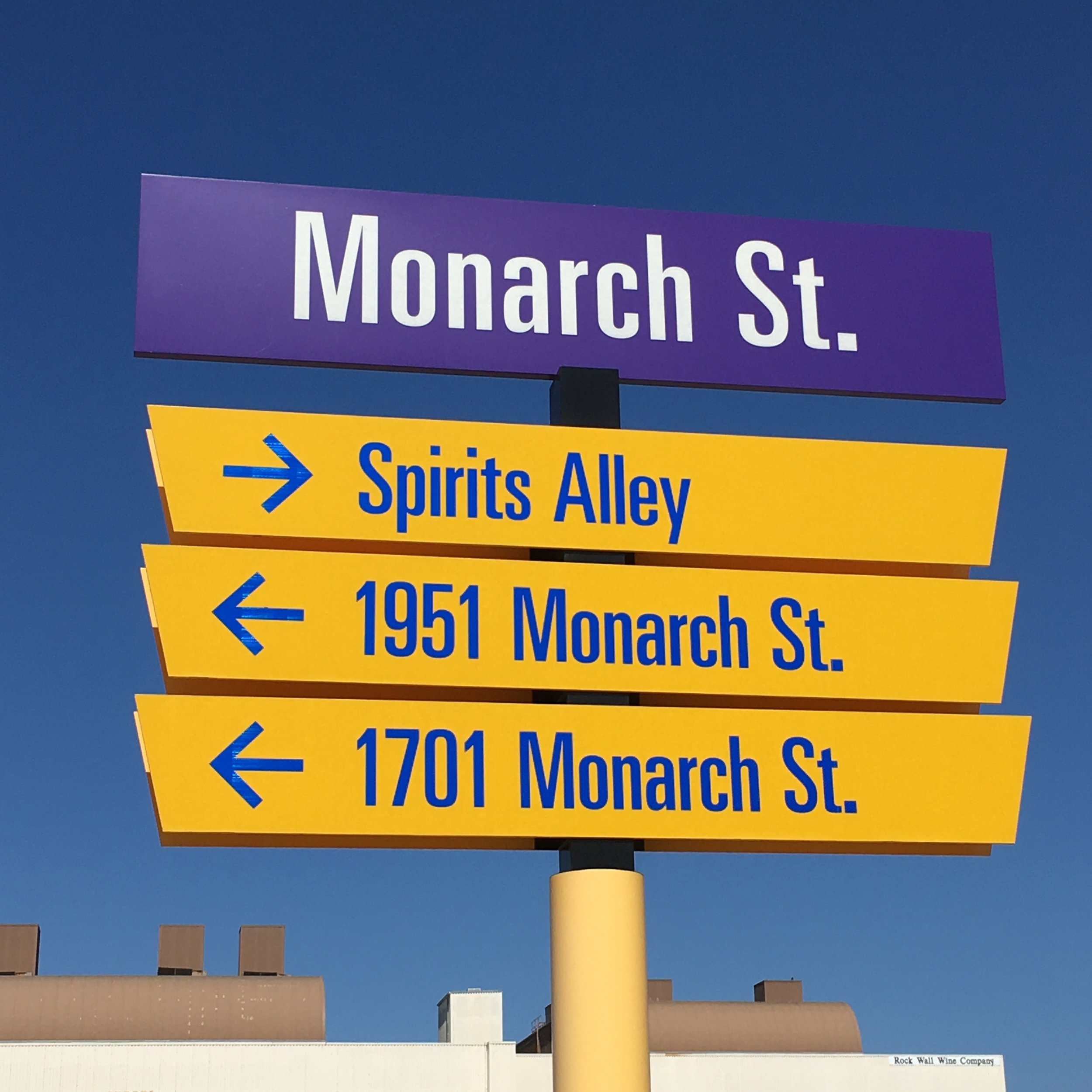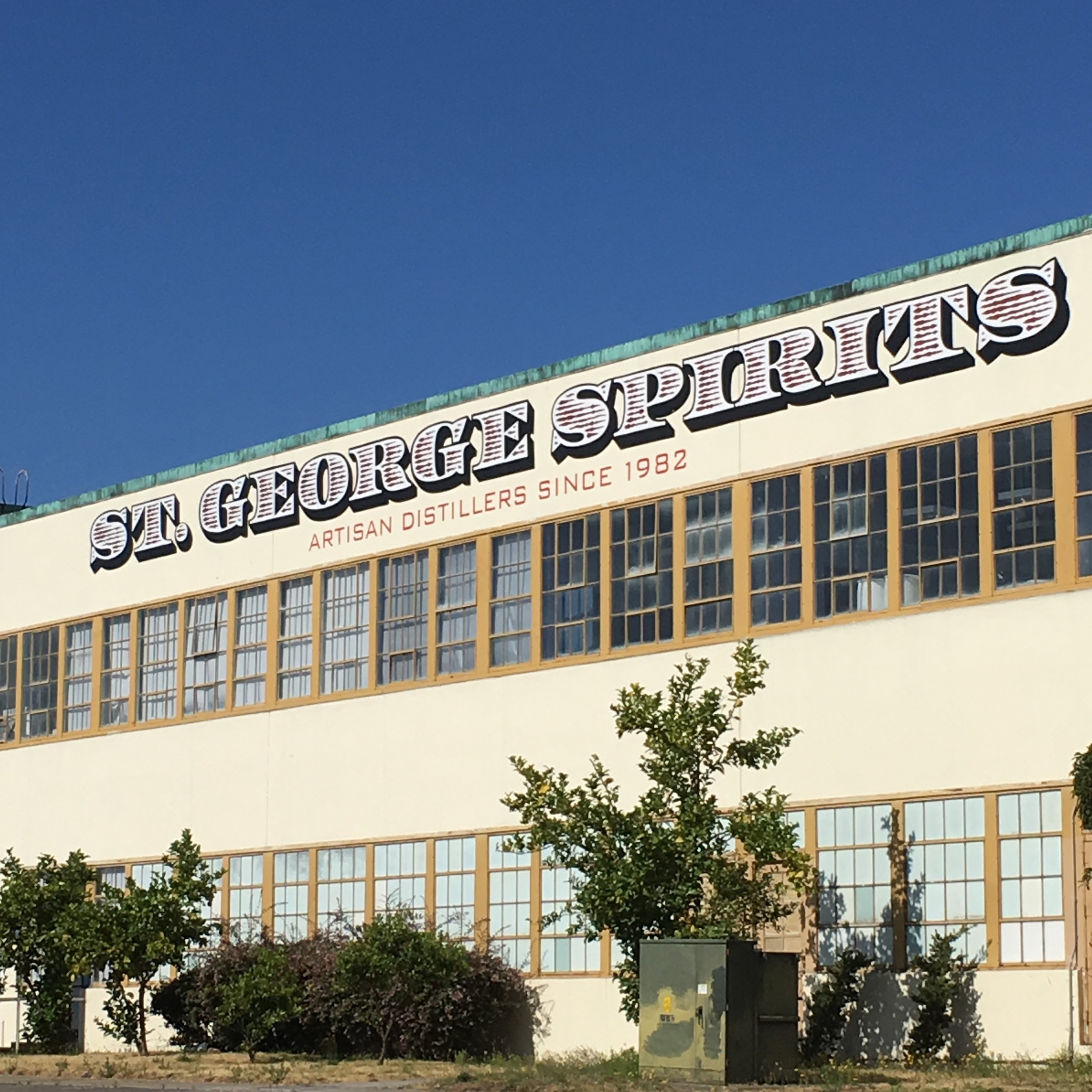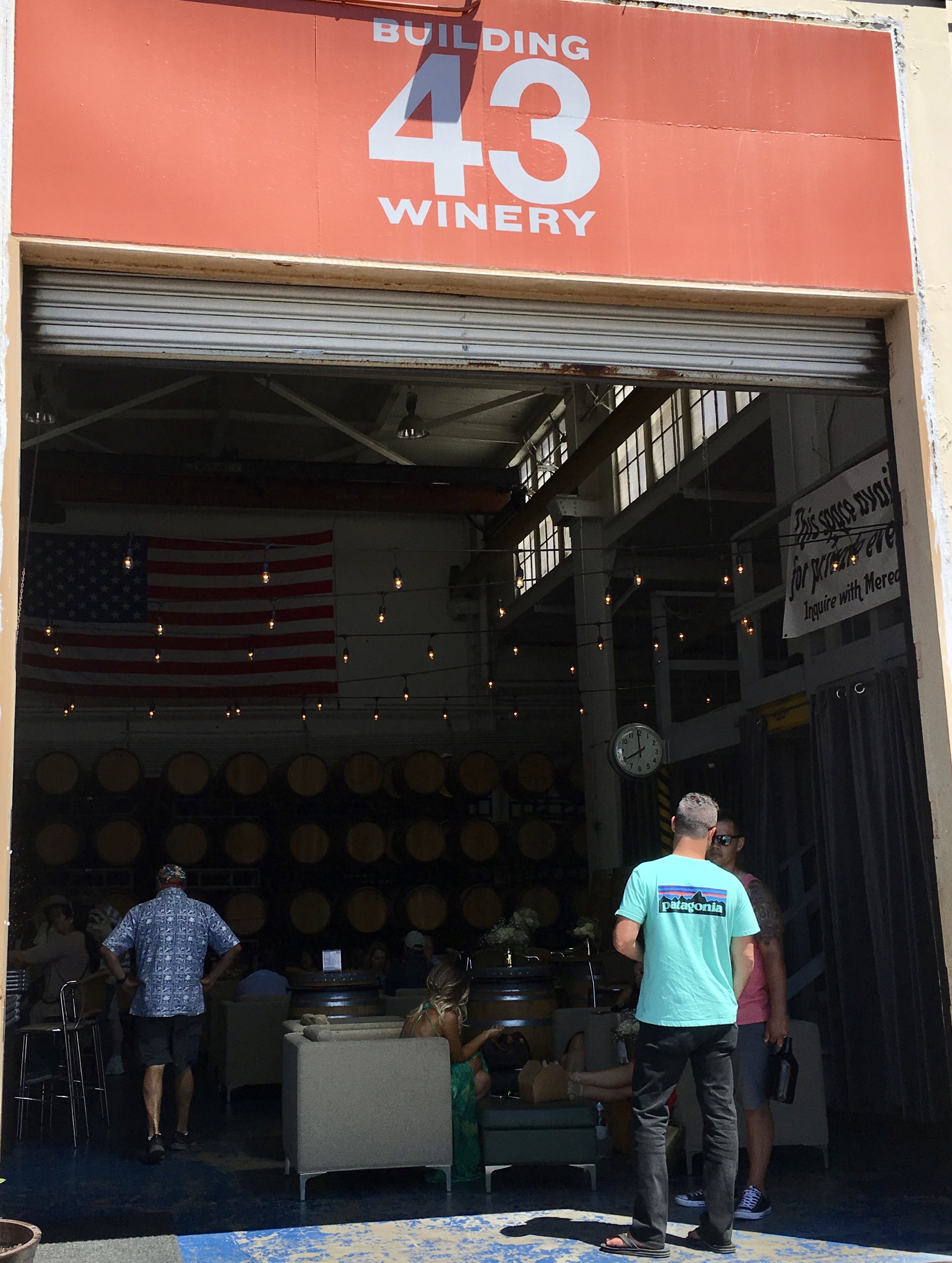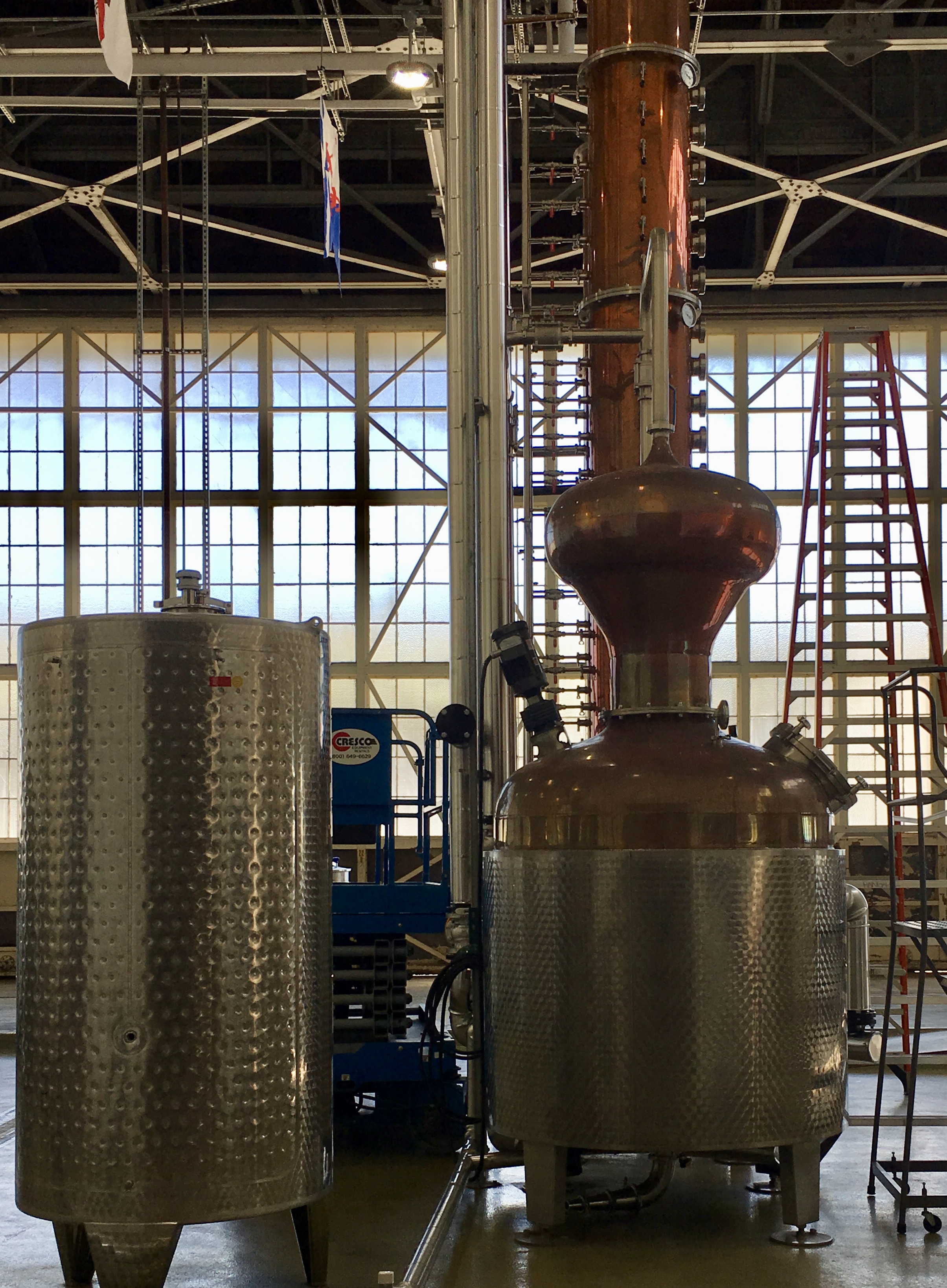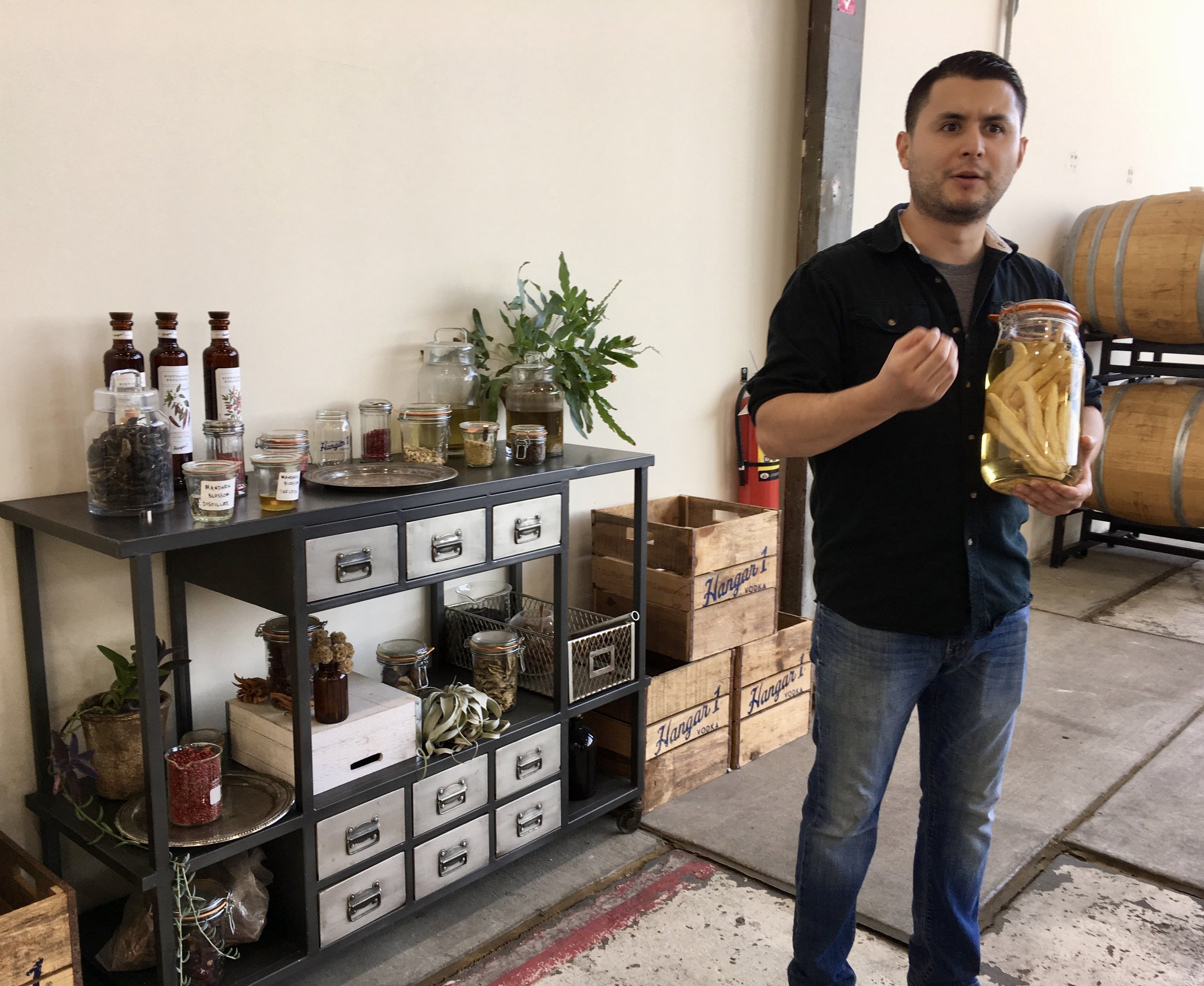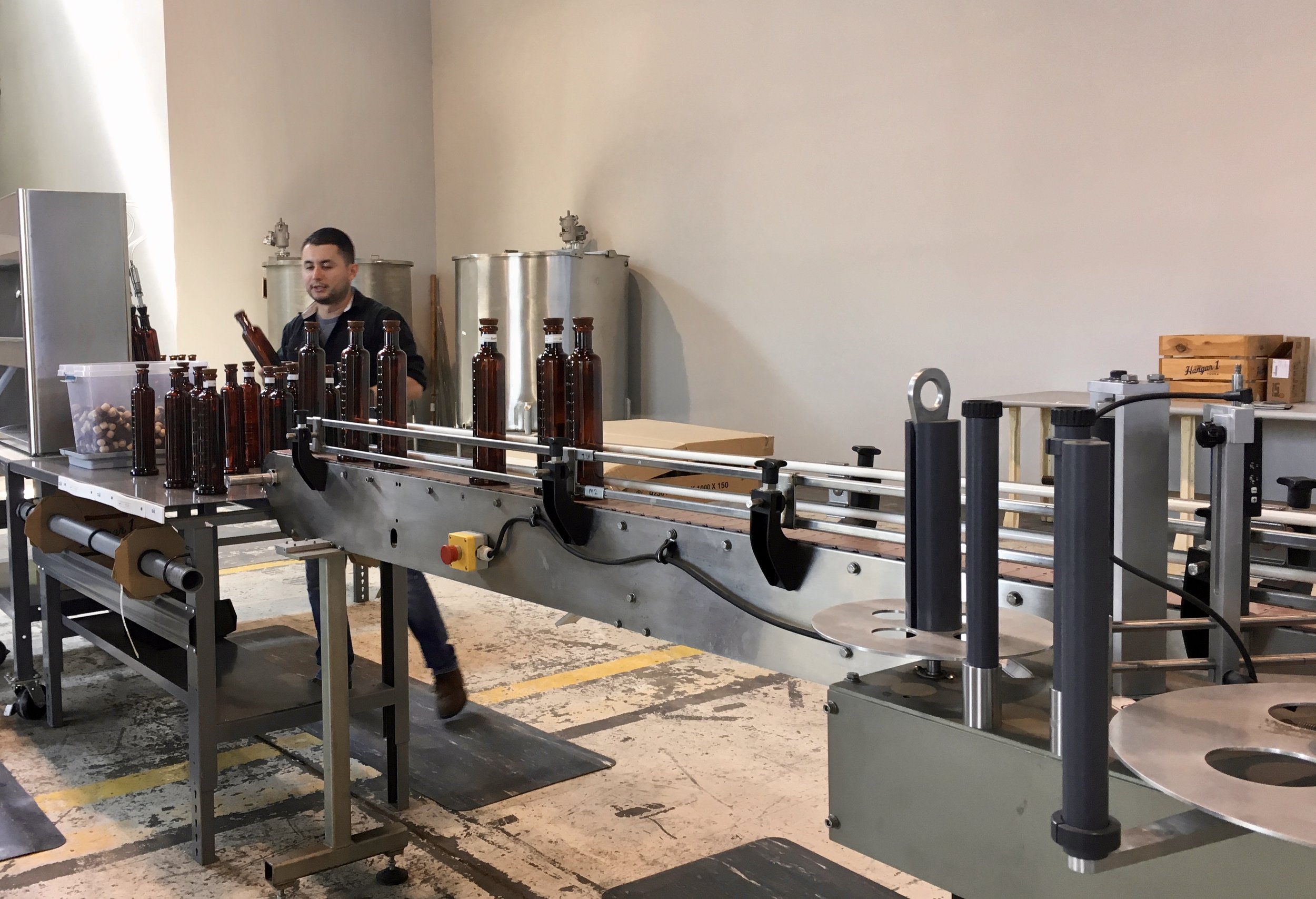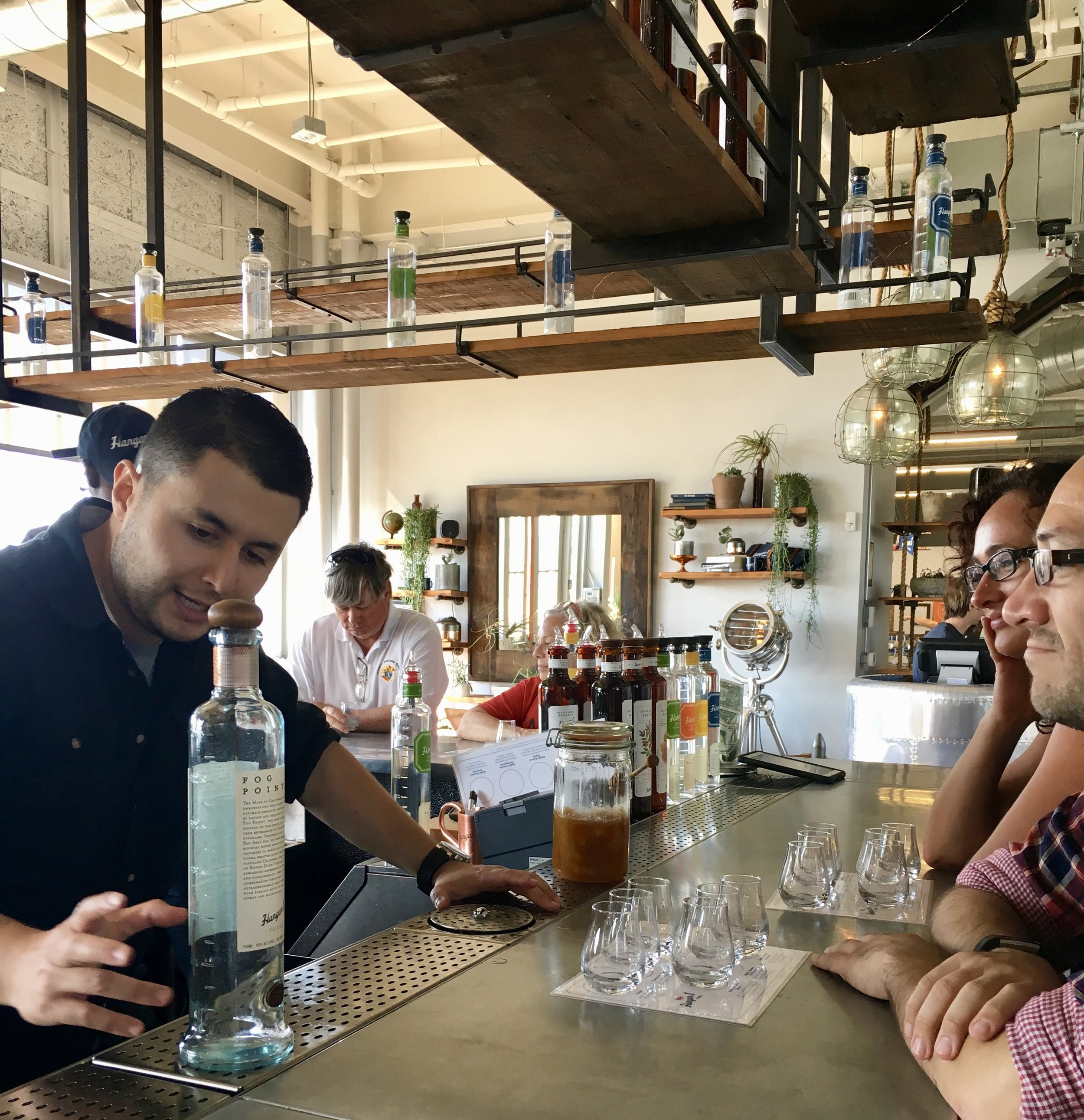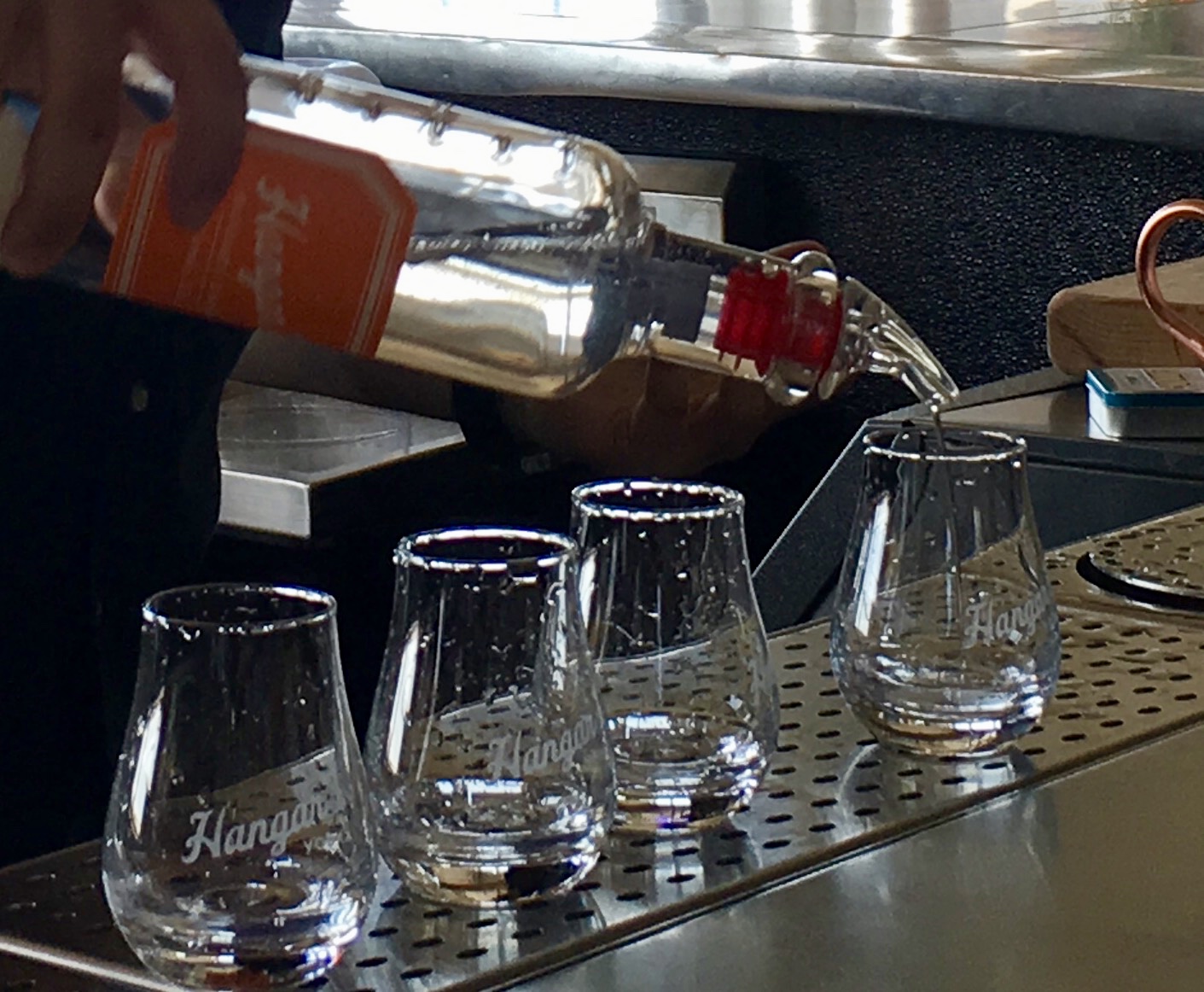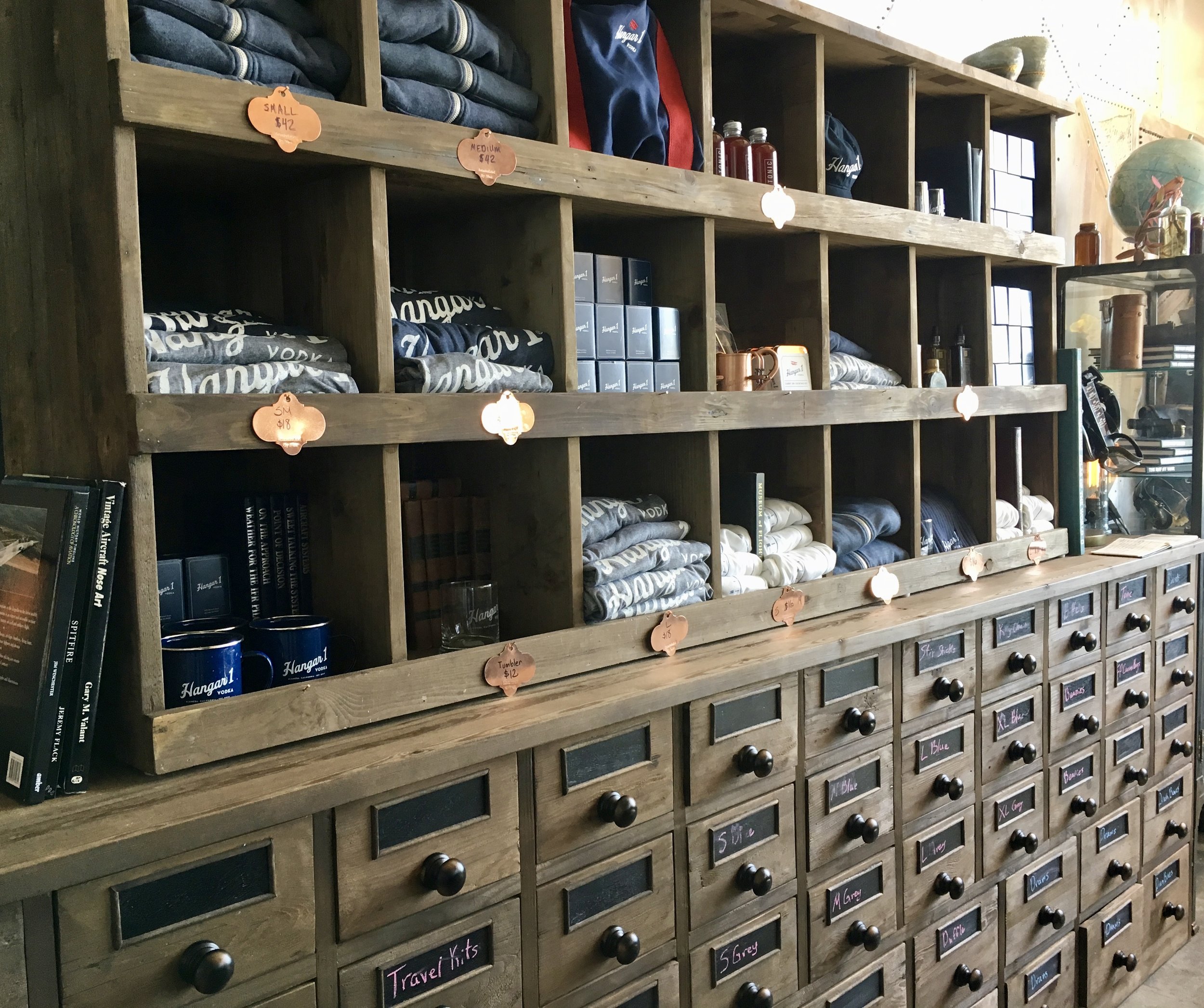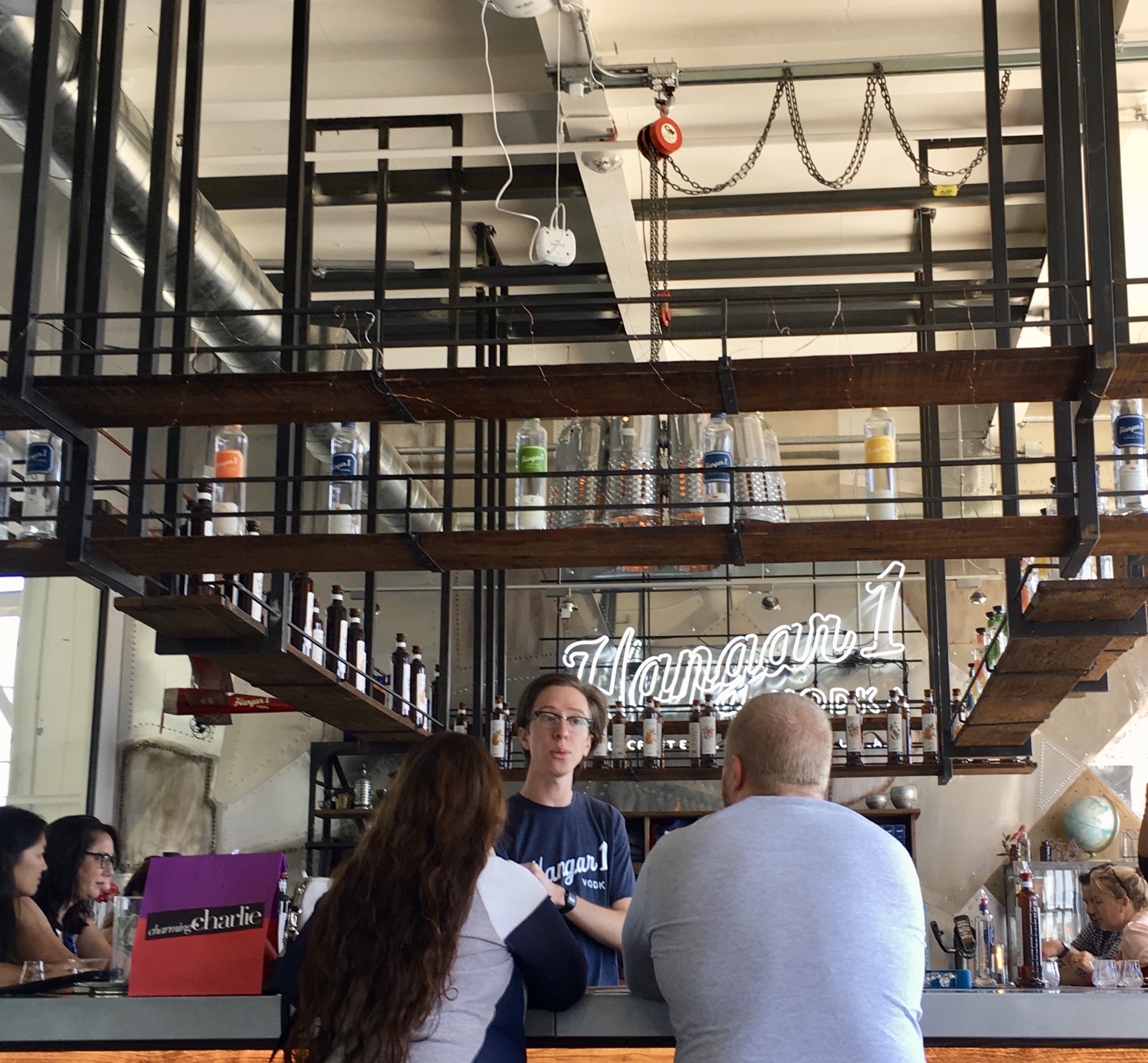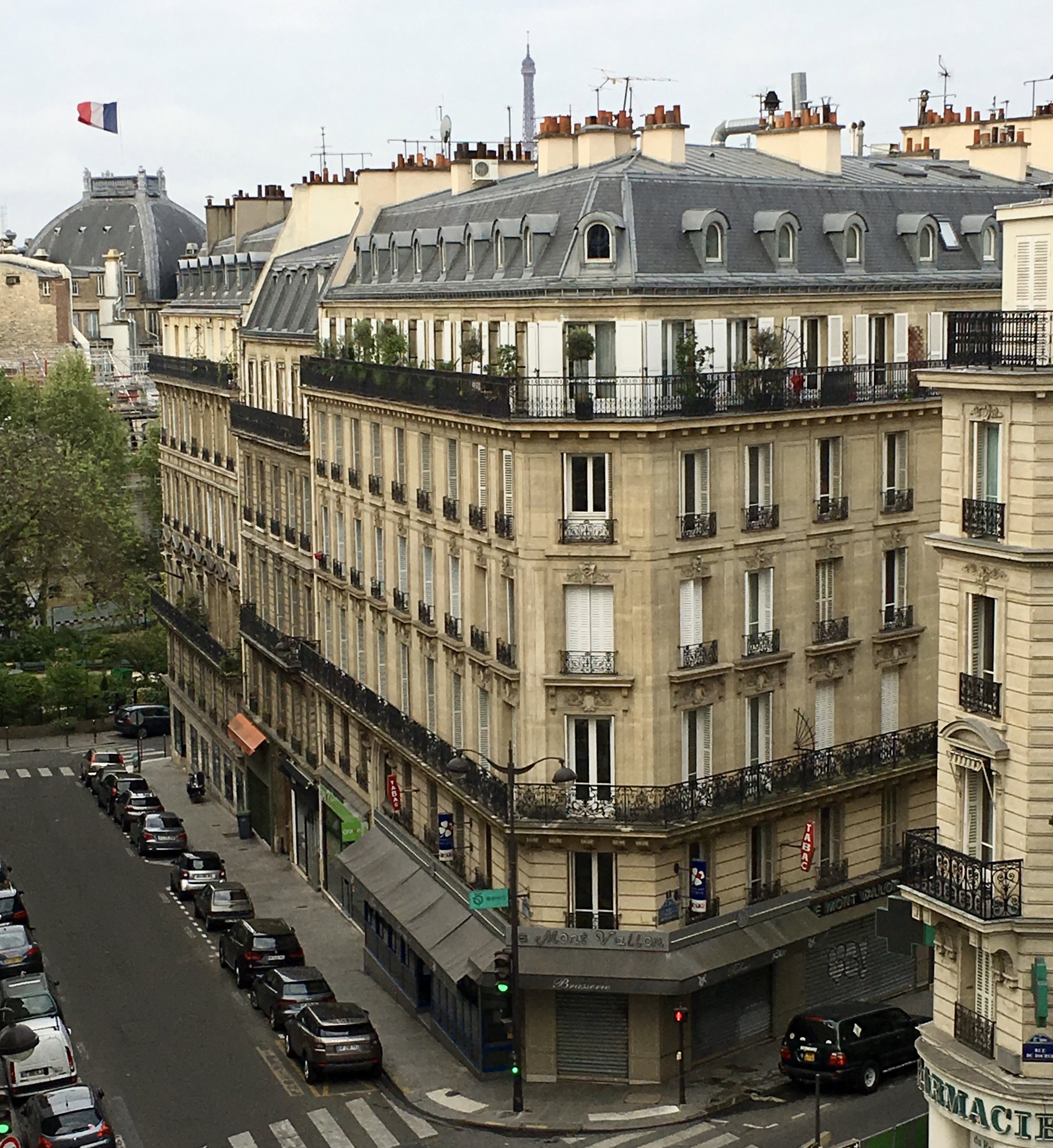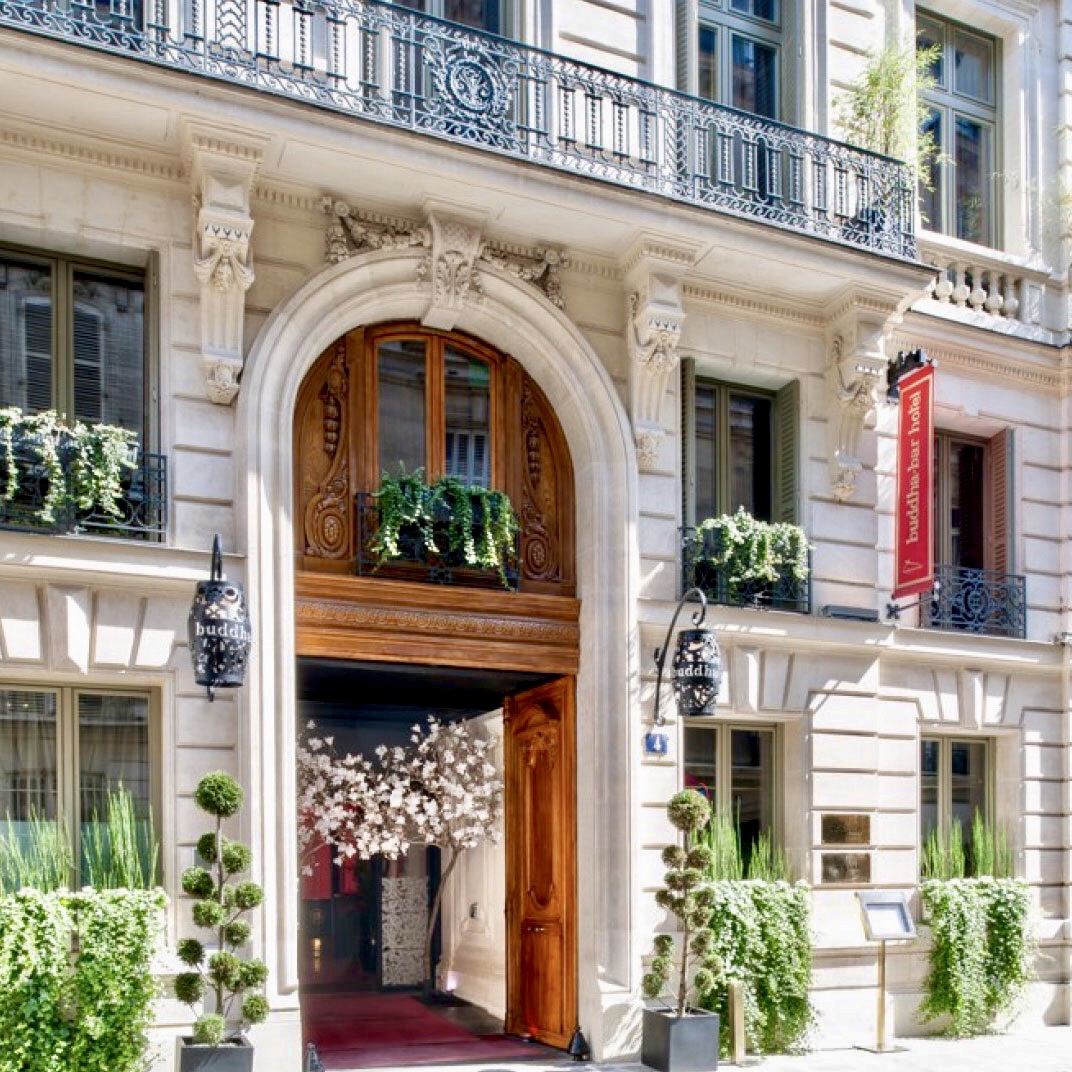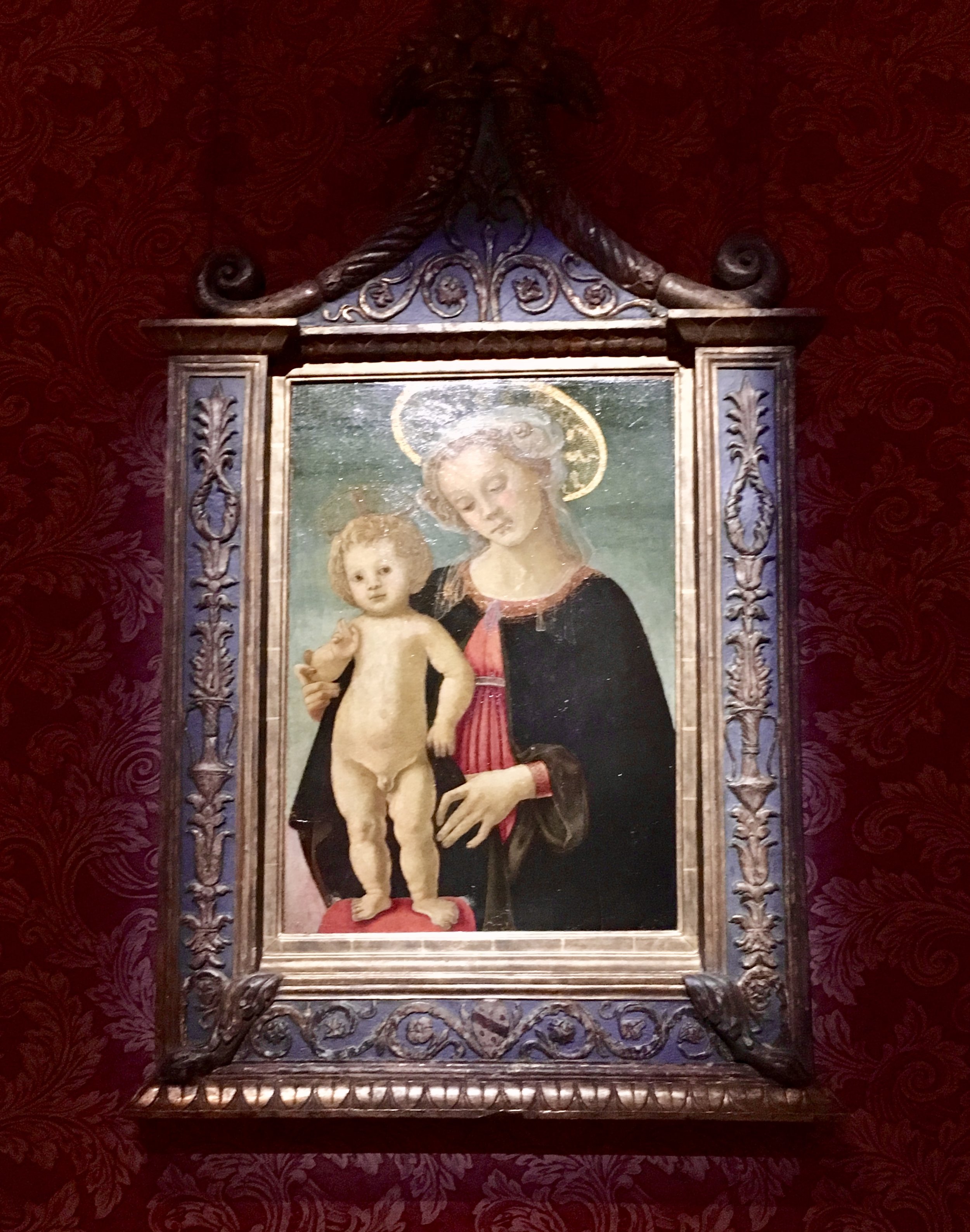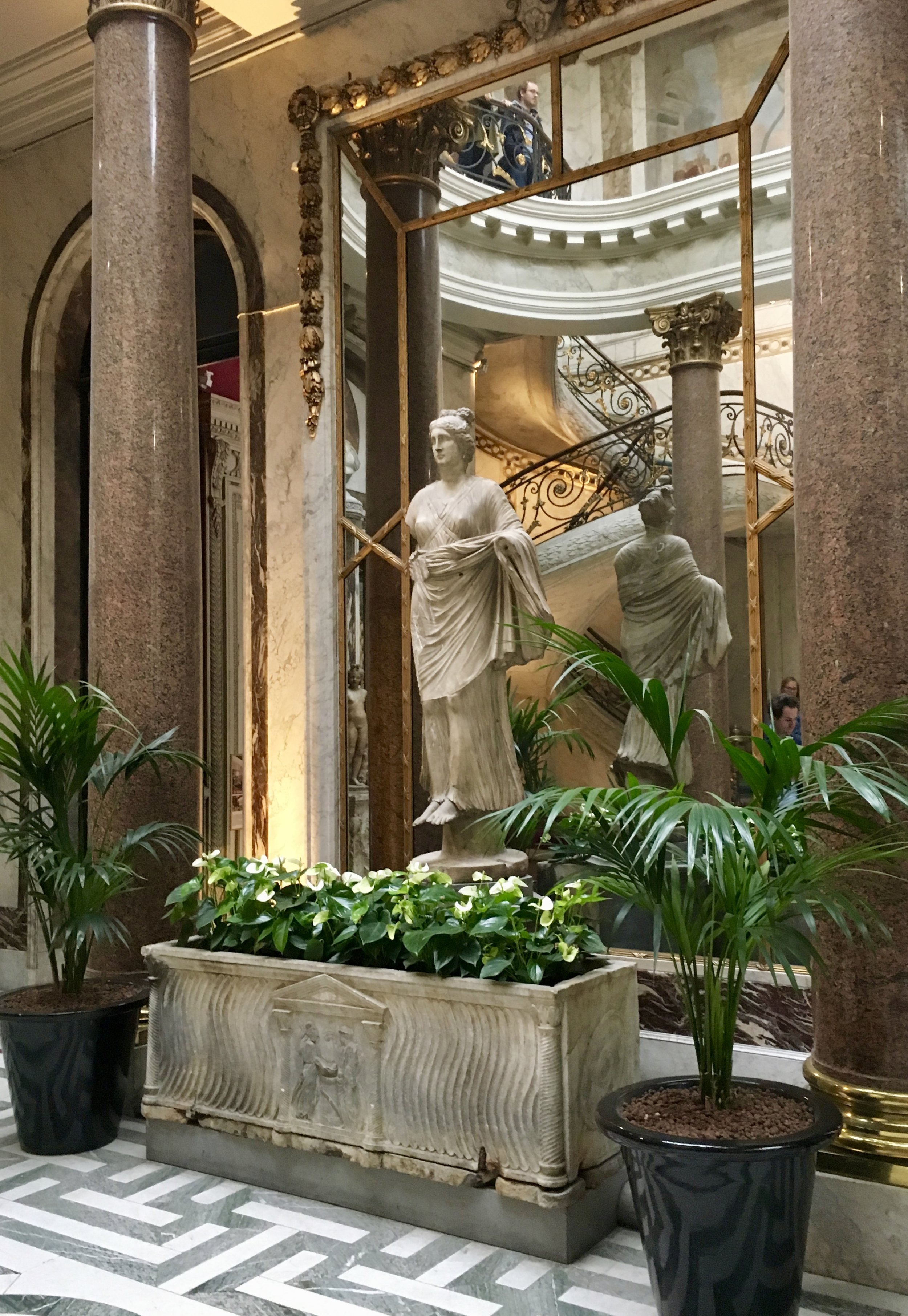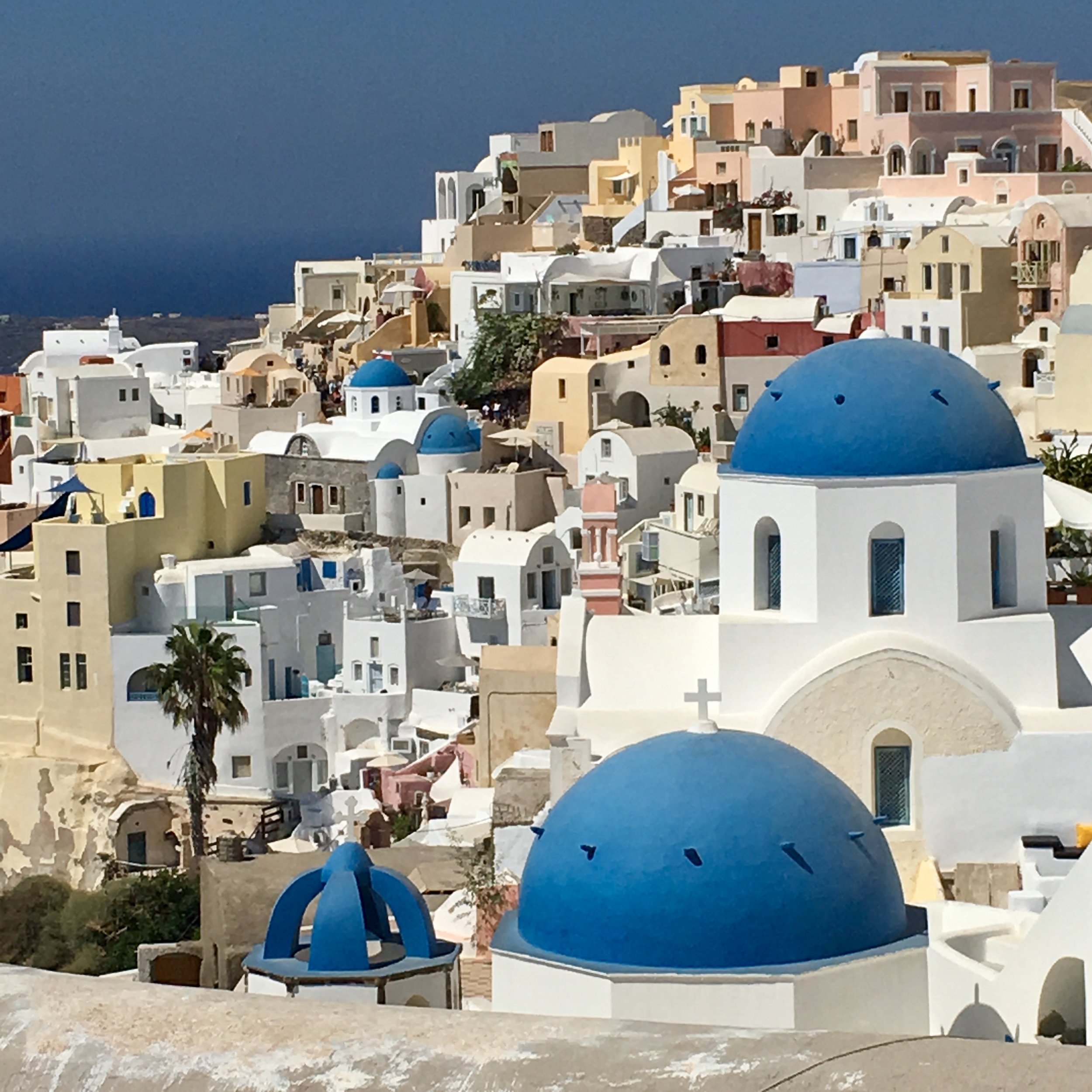Windstar’s Star Legend seems to dwarf Mt. Fuji in the distance.
Our cruise last fall onboard Windstar’s Star Legend gave us a vast look into the wildly complex world of Japan. From walking the streets of one of the world’s most populated cities to hiking quiet pilgrimage trails to visiting lively ancient shrines, the itinerary could not have been better. We have not traveled much in Asia and to be honest it has always seemed a bit intimidating to me. However, the thought of cruising from city to city to get an overview of Japan for our first visit seemed perfect. When we saw the itinerary Windstar was offering we felt it was the best way for us to experience Japan for the first time. The 10-day “Grand Japan” cruise from Tokyo to Osaka offered plenty of excursions to hiking trails with breathtaking views, poignant memorials, interesting museums, lively markets, cooking classes, meditative gardens and memorable meals. Mother nature threw a few curve balls at us as well but that’s what keeps vacations interesting.
Ship Overview
We love cruises for the convenience of unpacking once but visiting many places and Windstar’s power yacht fleet of ships are the perfect size. Windstar purchased the The Star Pride, Star Legend and Star Breeze, all ships from Seabourn in 2013 and gave them each $8.5-million makeovers to enhance their all-suite accommodations, public spaces and dining rooms to create luxury cruising experiences for its guests.
At 442.5-feet in length, the nimble size of the ship makes it easy to get around onboard and while in port, the ship can usually tie-up to smaller docks closer to city centers.
Once aboard the Star Legend, we felt instantly at home because the layout and decor of the ship is exactly the same at the Star Breeze, which we have sailed on twice before.
Our suite was a comfortable 277 square-feet including a sitting area, desk, bar, flat-screen TV, walk-in closet and large bathroom with combo tub-shower and a generous supply of bath amenities from luxury label L'Occitane. The bed and comforter were dressed in Egyptian cotton linens and robes slippers were provided. The stewards decorated our cabin as a nice surprise for my birthday. (Although the spelling may have been a little off.)
Thankfully for us, there were no formal nights or set times for dinner. (There is a dining room dress code though.) We liked having the breakfast options of the hearty buffet or smaller offerings of granola parfaits and smoothies found in the Yacht Club each morning. The casual, outdoor Star Bar was a great gathering spot for a drink before dinner and to enjoy local bands and dancers who performed on the dock as our ship departed each port. It was an endearing custom that showcased high school bands, dance clubs, drummers and some seriously good breakdancers.
We also enjoyed local dancers, musicians and singers who were invited to perform onboard in the intimate show lounge. With only 212 guests, everyone had a great view and opportunity to pose for pictures with the entertainers after the shows.
The public spaces are designed for intimate conversations or for groups who want to sit together. It's so easy to meet people on a small ship and by the second day we recognized everyone.
There are plenty of lounges and sitting areas on the sun deck plus a jacuzzi and swim spa. We used the gym a few times which had ample space and equipment. The ship also has a Spa and Wellness Center. The spa offers a large array of services including facials, massages, mani/pedi, waxing, hairstyling and tooth whitening. The Wellness Center under the direction of the Fitness Director provides complimentary daily fitness classes and personal training, body composition analysis and nutritional consultation for a fee.
We hope you enjoy the trip recap below and please feel free to contact us if you have specific questions about cruising with Windstar or any other cruise line. We've sailed on the Wind Surf, Star Breeze (click here to read our review of Star Breeze) and Star Legend. And if you would like assistance in planning your vacation we are a full-service travel agency and would welcome the chance to work with you. Please click here to contact Putnam Travels or to read more about us.
For more information on Windstar Cruises click here.
Disclaimer: As a travel agent, Larry received a reduced rate for this cruise but there was no compensation provided in exchange for editorial coverage. All opinions expressed are our own and all content on Putnam Travels Blog is for informational purposes only. We are not liable for any errors or omissions in this information and accept no responsibility for any damages or losses arising in connection with the use of this website. Links directing to third-party websites are for informational purposes only and serve as a resource to the reader. We do not accept responsibility for the content of these sites or liability from use of them.
Sept. 26, 2018 - Tokyo, Japan
After exploring Tokyo on our own for three days, we boarded our ship at the dock around 2:30 in the afternoon.
We settled in and were Introduced to the crew including the captain, who was new to us and the cruise line! This would be his first voyage as captain with Windstar Cruises.
As with every cruise we had taken this year, the itinerary had to be altered due to weather. In this case a typhoon was barreling toward southern Japan which was the scheduled location of our third and fourth ports of call - Kagoshima and Nagasaki. Instead we headed toward the inland sea enroute to Busan, South Korea where we would spend three days and two nights and three full days. Always be prepared and open to a change in itinerary. It happens quite often.
Sept. 27, 2018 - Port: Shimizu, Japan
The Star Legend cruised into the port of Shimizu in the early morning hours and shortly after breakfast we boarded a tour bus for our excursion to the sacred Kunozan Toshogu Shrine. It was a short drive to the Nihondaira Park Outlook where we had our first look at Mt. Fuji towering beyond the sparking Suruga Bay in Shizuoka Prefecture, an area with a population of about 3.8 million. Suruga Bay is the deepest bay in Japan, reaching a depth of 2,500 meters below sea level, and provides a bounty of seafood for the local area and beyond. The bay is fed by multiple fresh-water river systems and supports some 1,000 species of fish, perhaps the most popular being the sakura shrimp also known as “cherry shrimp.” When the shrimp is harvested it is laid out on the ground to dry and looks like red carpets laid end-to-end along the port. The locals love to eat the sakura shrimp raw, dried or prepared tempura-style.
There are two ways to reach Kunozan Toshogo Shrine - climb the 1,000 stone steps or be whisked up Mt. Kuno by aerial ropeway (cable car), which is what we did. Kunozan Toshogu is a shrine dedicated to one of the greatest shogun in Japanese history, Tokugawa Ieyasu. This famous leader brought an end to the long period of civil wars and united Japan. There are many Toshogu shrines dedicated to Ieyasu throughout Japan but this one is considered one of the most important because Ieyasu was first buried here before later being moved to Nikko Toshogu shrine. This shrine is still considered very significant as the Japanese consider Ieyasu’s spirit still resides here making it a popular place for people to come and pray. During his life, Ieyasu endured many difficulties and so this shrine is visited by people from all over Japan to pray for protection from danger as well as health, longevity and academic success.
Our guide escorted us through the torii gate - the symbol of entering a sacred shrine - the first of many we would pass through on our trip. Across Japan we found many omnipresent elements at Shinto shrines including torii gates, stone lanterns, stone animal statues, chōzuya (purification fountains), shimenawa (markers of a sacred place), EMA boards (small wooden plaques with wishes written on them) and areas to make monetary contributions to the shrine through purchases of charms, talismans and fortunes. Another commonality was the layout of the shrines. Most had three main buildings - Haiden (worship hall), Honden (inner shrine) and Heiden (hall of offerings). The surprising element to us were the colorful sake barrels displayed at each shrine. Smaller shrines had a few barrels and larger shrines had hundreds stacked six barrels high. These empty barrels are known as kazaridaru, meaning “decoration barrels" and are displayed as symbols of the connection between the shrine gods and the people of Japan. Local brewers provide the shrines with sake throughout the year for ceremonies and major festivals. There are more than 60 rituals and events held annually at Kunozan Toshogu.
Above, you can see the chozuya (purification fountain) adorned with shimenawa - the folded papers held by a twisted rope which is hung to represent a sacred area. This one is in the area of Ieyasu’s original burial place. Through Japan we saw locals at these fountains practicing the custom of purifying themselves before making prayers at Shinto shrines. It isn’t essential for tourists to take part in the custom but it is appreciated by the Japanese so it’s respectful to at least give it a try.
Here’s what to do: Take the wooden dipper in your right hand and scoop up some water. Pour a little water into your left hand. Change the dipper to your left hand and cleanse your right hand. Change the dipper back to right hand and pour water in your left hand which you raise to rinse your mouth. Do not swallow the water just spit it into the fountain basin. Then, rinse the handle of the dipper in the water flowing from the spigot and return the dipper to the basin, scoop side down.
A word about Charms, Talismans and Fortunes
It wasn’t until we visited a third shrine that we felt comfortable enough to split from the tour group and take a closer look at the building where omamori (good luck charms) could be purchased, wishes made and fortunes told. At this shrine, a large board displayed a number of charms (or amulets) often given as gifts to ward off danger, evil or disease. Throughout Japan we saw many of these amulets dangling from backpacks, purses, strollers, luggage and even on car rear-view mirrors and motorcycle handlebars. The charm and written prayer are usually hidden within the small, brocade bag and it is considered bad luck to open the bag. Other types of blessings contained in the various bags are for things like passing exams, good health, happy marriages, fertility, success in business and peace and prosperity.
We decided to try a little fortune seeking of our own and paid $10 in exchange for a large cylinder filled with bamboo sticks (omikuji). I shook the cylinder lightly until a numbered stick fell out then returned it to the woman behind the counter and handed her my numbered stick which she exchanged for a rolled piece of paper which contained our fortune. It was written in Japanese (Some shrines have English versions you can ask for, but his one did not.) so I asked the gentlemen standing next to me if he could translate for me.
There is a lot detail information on an omikuji fortune but the first thing to look for are the largest Japanese characters. This will immediately tell you what kind of blessing you received. The man had a very surprised expression when he looked at our fortune. “Your are very, very lucky,” he told us. “This is the best fortune you can get. You should buy a lottery ticket as soon as you get home.” We never won the lottery but in the spring I did win the NCAA March Madness pool at our local pub so I attributed it to our visit to the shrine. Here are the characters to look for on your fortune.
大吉, (dai-kichi): great blessing (This is the one we got)
中吉, (chuu-kichi): middle blessing
小吉, (shou-kichi): small blessing
吉, (kichi) blessing
半吉, (han-kichi): half-blessing
末吉, (sue-kichi): future blessing
末小吉, (sue-shou-kichi): future small blessing
凶, (kyou): curse
If you receive a good blessing you can take your fortune with you but if you receive a bad fortune, the custom is to leave the slip of paper at the shrine tied to the ema boards with the other bad fortunes left behind by others. Hopefully, the bad luck or curse will stay behind too!
Sept. 28, Port: Shingu, Japan
Today we woke up to clear blue skies and bright sunshine and boarded a bus for the 30-minute drive to the Kansai region for a hike along the Daimonzaka Trail which is part of the network of Kumano Kodo Pilgrimage Trails, deemed a World Heritage Site. Our hike took us along a path paved with stones through a forest of massive evergreens including a pair of 800-year-old cedar trees that seemed to be reaching out to each other and are known as the “Husband & Wife” trees. These ancient trails have been used for more than 1,000 years and so it felt quite special to walk along these historic paths.
After the hike we boarded our motorcoach for a short drive to view Nachi Falls, the tallest waterfall in Japan, and visit the Kumano Nachi Taisha Shrine and the Buddhist temple Seigantoji. The shrine and temple share a site which also includes a three-story pagoda and is just one of many complexes throughout Japan that exemplify the fusion of Buddhist and Shinto influences that is quite common among the Japanese populaton. Most Japanese have no problem observing both.
Sept. 29, Day at Sea
Sept. 30 - Oct. 2, Port: Busan, South Korea (3 days)
Before we ever boarded our cruise ship in Tokyo the local news on TV had been filled with ominous reports of Typhoon Trami heading toward the southern coast of Japan. During the Captain’s welcome on the first night aboard our ship we had been told it was very likely there would be a change in our ship’s itinerary and so it was, on the fourth day we found ourselves sailing north to the Seto Inland Sea for shelter and then on to Busan, South Korea instead of heading south to our scheduled stops at the ports of Kagoshima and Nagasaki.
To Windstar’s credit, the crew and excursion team managed to take the detour in stride. The captain had secured a very convenient berth in the port of Busan even though we arrived two days earlier than scheduled and the excursion team quickly organized four additional excursions including a day trip by bullet train to the city of Seoul. We opted not to sign up for the trip to Seoul because it would have made for a very long travel day (2-1/2 hours each way on the train). Instead, we used all three days in port to explore Busan and we were glad we did because we fell in love with the city’s vibrancy, friendliness and culture. We don’t have kids but I think a family with kids of any age would have a blast in this city. In fact, unbeknownst to us, Lonely Planet named Busan it’s top Asian destination in 2018.
When we first learned about our diversion to Busan we immediately began looking online for a private guide who could meet us at the ship and give us a full-day tour of the city. Our guide, Jay, picked us up at the ship at 8:30 on our first morning in Busan. We exchanged money inside the terminal building before heading outside into the rain for a short walk to Jay’s car. We had exchanged a few text messages and explained what we wanted to do and see and Jay had arranged a perfect itinerary for our day. We began with a stroll through Gamcheon Cultural Village, a colorful cluster of residences and businesses built into a hillside which has earned the area nicknames like “Machu Picchu of Busan” and “LegoLand of Busan.” From there, we visited Jagalchi Fish Market, Gukje Street Market, took a stroll along Gwangbok-ro Street, ate a traditional Korean lunch, enjoyed the view from the top of Busan Tower followed by a short tea break and then took a late-afternoon drive to Beomeosa Temple.
There was so much to love about Busan we created a separate post about our top 12 Things to do in Busan. Click here to read more.
Oct. 3, Port: Fukuoka, Japan
Today we visited the Kyushu National Museum - the fourth and newest national museum in Japan (the others are located in Tokyo, Kyoto and Nara). The museum building is an architectural gem situated amidst forested green hills.
As with most excursion tours, we had limited time so we couldn’t explore the entire museum and its lovely surroundings but did have ample time to view the permanent exhibit with its focus on the history of cultural integration within Asia. My favorite part of the museum was the Ajippa, which is a free, interactive space on the main floor where kids of all ages can explore objects through their five senses. All kinds of objects from around the world are on display like games, puzzles, household goods, toys and clothes. Everyone is encouraged to play dress-up and play games.
After the visit to the museum our motorcoach took us to Dazaifu Tenman-gū Shrine, a lush, beautiful and spacious complex covering 3,000 acres. The grounds contain the shrine structures as well as picturesque ponds, quaint bridges, gardens and some 6,000 Asian plum trees. The setting is so lovely that many locals and tourists alike come to pose for photos in traditional kimono.
The city is also known for a beautiful and tasty little sweet - the Umegaemochi. It’s a dumpling filled with red bean paste and wrapped in mochi-rice cake. The cake is stamped with a delicate apricot flower motif and is served warm and is best eaten right away. There are so many Umegaemochi shops along the street to choose from but look for the one with the longest lines which means they serve the best. They were delicious!
Oct. 4, Port: Hiroshima, Japan Hiroshima Peace Memorial Park
Today we awoke early and in a little somber mood in anticipation of our tour to the Hiroshima Peace Memorial Park. The park, located in the city center, is home to several museums and monuments dedicated to the legacy of the nuclear bomb attack on Hiroshima on August 6, 1945. The buildings and grounds cover almost 75-square miles in the heart of the city and include The Hiroshima Peace Memorial Museum, A-Bomb Dome, Children’s Peace Monument, three Peace Bells, Peace Flame, Memorial Cenotaph, and other notable symbols situated along winding paths amid peaceful green spaces.
Perhaps the most poignant structure in the park is the A-Bomb Dome. The remains of the bombed-out Hiroshima Prefectural Industrial Promotion Hall still stands as a symbol of the horrors of nuclear weapons and humankind’s pledge for peace. It was added to the UNESCO World Heritage List on December 7, 1996. There are three Peace Bells within the park, one containing a Japanese Friendship Bell which is open on all sides to encourage visitors to ring the bell for world peace.
Several local school groups were visiting and gathered around the Children’s Peace Monument. The 9-meter-tall structure with a bronze statue of a young girl lifting a golden origami crane overhead memorializes Sadako Sasaki, who was just two years old when the atomic bomb fell near her home on August 6, 1945. Nine years later, she began to suffer from the effects of radiation and was diagnosed with acute malignant lymph gland leukemia. She began folding paper cranes in hopes it would bring her a full recovery as it was traditionally believed that if one folded 1,000 origami cranes, one’s wish would come true. An origami crane was also a symbol of hope and healing during challenging times. Sasaki did manage to fold 1,000 cranes but she succumbed to the disease at the age of 12. Bus loads of local school children and children from all over the world visit the the memorial daily and bring with them beautiful displays of folded cranes to leave at the memorial.
Unfortunately, the museum’s main building was undergoing a major renovation while we were there but we did have time view the exhibits inside the East Building which included permanent displays of Hiroshima before and after the bombing as well as interactive and educational activities. (UPDATE: the main building was reopened in April 2019.)
We then boarded our motor coach to head to the ferry which took us to Miyajima Island to visit what is considered one of the three most beautiful places in Japan and the site of the iconic “floating” red torii gate of Itsukushima Shrine.
The shrine is dedicated as a UNESCO World Heritage Site and is built over the water so that during high tide the torii gate and the surrounding buildings seem to float on the sea. The island offers some nice hiking trails with camping, ryokan and hotel options in addition to traditional and contemporary dining options. We could see ourselves spending a night on this island if we ever come back. Adding charm to the island are dozens of deer quietly roaming the streets and parks but do not fall for their dainty-like qualities. Our guide warned us these deer are street-smart petty thieves known to pick pockets and eat passports, ferry tickets and yen.
Oct. 5, Port: Takamatsu
Our last day began with a beautiful morning walk through Ritsurin Garden in the city of Takamatsu. Ritsurin is considered one of the most beautiful gardens in Japan and has a three-star rating in the Michelin Green Guide Japan. It is believed the Ritsurin Garden was originally started in the late 16th century, from a garden of the Sato clan. As each lord took over the garden it grew in size as it was further developed by generations of families for hundreds of years. There are more than 1,000 pine trees carefully tended to by skilled gardeners who shape many of the trees like bonsai. Today, the park covers some 185 acres and includes multiple gardens and ponds, a cafe, three teahouses, a folk craft museum and gift shop all surrounded by natural beauty including Mt. Shiun. We spent about an hour touring the garden and would have stayed longer if we’d had the time. You can stroll along the winding paths and bridges or tour the gardens by Japanese-style boat with your own boatman. Every park in Japan is beautiful but Ritsurin Garden really stood out for us on this trip.
When we were selecting our shore excursions, I remember saying, “Mmmm, maybe we’ll be burned out on visiting shrines by the end of the week,” so we booked the Udon Noodle Making excursion instead and oh, my goodness, it was so much fun.
Our classroom inside the Nakano Udon School was set with long, rectangle tables where an energetic local chef led us through the steps of making dough. Our instructor was a ball of energy whose enthusiasm transcended language barriers and within minutes everyone in the class was busy rolling out dough, laughing, dancing, playing a tambourine or doing all four. At the end of the class we moved to a dining room with hot pots where we cooked our noodles and enjoyed a wonderful bento box lunch with our classmates. We even got souvenir diploma scrolls!
This Japan cruise was ideal for seeing the country for the first time. We are already making plans to visit Japan again on our own and venture into more remote areas for some cycling and hiking. The public transportation system was much easier to navigate than we had anticipated as there was almost always signage in English and English-speaking guides to answer questions.
Much effort has been put into getting ready for the 2020 summer Olympics which will be held in Tokyo. We think tourism in Japan will skyrocket when viewers see images of the country during the Olympic coverage.
Japan is such a beautiful, interesting, mystical place - so different from any other country we have visited. We will always look back on this trip as one of our absolute favorites.
